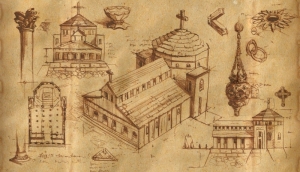Who has been working on this article?
Most recent update posted on Monday, July 3rd, 2006
Help | Update History
Article Navigation
The sections below cover everything you need, or want to know about Civilization IV. Click on one to begin, or use “CTRL-F” to search for key-words.
Note: This article is best viewed under 1024×768 or higher resolutions.
Info Center Introduction
Welcome to the Sid Meiers Civilization IV Information Center!
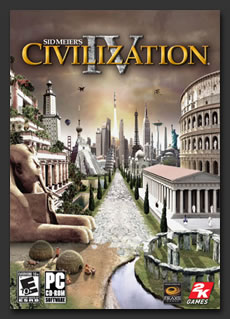 This information is meant to give anyone a deep, factual understanding of Sid Meier’s Civilization IV (the sequel to Sid Meier’s Civilization III) as well as Civilization IV: Warlords (the first expansion pack of the base game). The article will keep up to the very last detail of information that is currently available to us.
This information is meant to give anyone a deep, factual understanding of Sid Meier’s Civilization IV (the sequel to Sid Meier’s Civilization III) as well as Civilization IV: Warlords (the first expansion pack of the base game). The article will keep up to the very last detail of information that is currently available to us.
Material is gathered from all sources available (in a detailed manner) and put into this article as one organized piece. This should make it very easy to find virtually everything you want to know, without having to surf through multiple places on the web to find what you need. You don’t have to be a
Civilization III veteran to understand what we are talking about here, since this is a brand new Civilization… a historical simulation/strategy game series which has won multiple game awards, and which is accepted the world over as being the greatest, and finest turn-based strategy game series on the planet!
The game has been released, but it does not mean that this article will not
be updated with more news as it comes (patches, expansions, etc)!
This information is up to date as of Monday, July 3rd, 2006, and up to the latest available bit of information.
As information changes, or is released, I will be updating this as soon as possible so it evolves to be factual. I recommend that you check out the updates (when they are posted), so that you stay informed, and up-to-date as well. Checking the “Miscellaneous Information” section occasionally can also give you a heads-up on some other things either in regards to this article, or other information. From what we have gathered so far, as well as the great reviews the game has been receiving, I believe we can all form our own opinions of it.
This is the most detailed and extensive, most viewed, and also the most updated place for all things Civilization IV from around the web.
Currently, there are a total of 360+ gathered game details, with nine new additions! Don’t miss out, discuss the article!
Newest Updates
This is the section for looking up all the current new updates on the go from Monday, July 3rd. They are not organized in any way, so it is highly recommended that you read through past this section and take a more in-depth look at the rest.
- Patch v1.61 has been released. There are many changes, fixes, and additions.
Its size is 45.7MB and can be downloaded here.
The SDK and PitBoss are also available. Get these here.
Civilization IV: Warlords
This is the first expansion to the original Civilization IV. It is due out this summer, in late July (2006).
- Visit Civilization IV: Warlords’ own section of details!
The Big Picture
Here we’ll look at the very basics of the game, from its creators and the design elements they implement, to what general game-play aspects it will contain.
- Development & Producers: The new Sid Meier’s Civilization IV was developed by Firaxis Games (based in Hunt Valley, Maryland, U.S.A.).
It is much more streamlined and full of personality. Unlike the Civilization III series, the publisher will not be Atari, as they have sold off the Civilization Franchise to Take-Two Interactive. Take-Two confirmed this on January 26th, although it has been known that Atari sold the Franchise since November 24th, 2004. The game was published under Take-Twos publishing label 2K Games.The senior producer of the game was Barry Caudill (he produced Sid Meier’s Pirates!), and the producer Jesse Smith.Jesse was the producer of Civilization III: Conquests as well (the last, and most commendable expansion of the Civ3 series). The project lead, and lead designer of the game was Soren Johnson, he programmed and co-designed Civ3 along with company CEO, Jeff Briggs. For more information on Firaxis staff, check out the Bios section on their website.
- About 38 people have been dedicated to certain segments of Civ4 (terrain, cities, interface, etc). It will take thousands of people hours to complete the project. Firaxis also says that they have many (100+) active Civilization fans testing and giving feedback to Firaxis. This number is rising. However fans have been giving feedback since June of 2004 in a private online forum.
- News that Civilization IV was in the very early stages of development first came on December 4th, 2003.Development of Civ4 most likely started around Spring time in 2003 (more than two years ago). At around the Fall time of the same year, Firaxis had an early Multiplayer version up and playing. The basic game-play elements were established then. After that period (around May of 2005) much more attention has been given to improving the AI (or Artificial Intelligence).
The game hit Beta in August and from then on, much more attention was given to polishing up the different aspects of it. Civ4 went Gold on October 19th, and shipped on the 25th, although most people got their copy on October 26th.
- Good news for Macintosh Gamers! Civilization IV will be available for the Mac in early 2006 [source]. Aspyr Media is bringing the game to the Mac. Civilization III: Complete (featuring both expansions of Civ3: Play The World and
Conquests) will also be available for the Mac later this year, in December. - Firaxis Memo: Firaxis has updated their “Behind the Scenes” section on their website with a new Winter-edition Memo. The part below includes content on Civ4:Civilization IV has been flying off the shelves and has received loads of great reviews. We want to thank our fans for your unwavering support, and particularly for your tremendous feedback that helped get us through some initial technical issue right after the release of the game. Our team worked tirelessly to fix the problems quickly and post a patch to help those folks experiencing difficulties in running the game. Civ fans are truly extraordinary! And dont forget… Santa will be bringing another gem of a gift in January… the Civ IV SDK! This is an unprecedented offering and we cant wait to see what all of you budding Civ designers will create!
- “Civilization is much more of collaboration between
our designers and our fans. We’ve had a lot of feedback over the years about what works and what doesn’t in Civilization and it’s had a big impact on the final game.” – Sid Meier said in a GameSpy Interview. - Many conventions which have remained the same since Civilization I (which came out in 1991) have been rewritten to ensure a quality new game.
- “Civilization is much more of collaboration between
- The game was written entirely from scratch using flexible XML data files, as well as the Python scripting language. Boost.Python (this allows for seamless interoperability between C++ and the Python programming language) was used as the interface layer between the C++ game code and Python. Python is used in the game for map generation, interface screens, game events, tools, tutorials, etc. If you want to see how this will affect customization of the game (or any other aspect relating to customization), look under Customization Flexibility. The new 3D engine will also allow for greater possibilities (find under A New Expression).
- Firaxis main focus is aiming to keep the game true, simple, but mostly to lose aspects which are not fun (find under Controlling Your People… by Decree for aspects which have been removed because they are not fun to the player), and to maintain a successful Civilization Franchise.They also plan to break free of some bad habits from previous Civilization titles. For more information on maintaining a successful Franchise, see the PowerPoint entitled Dont Blow It!, by lead Civilization IV designer, Soren Johnson. An article that relates to the PowerPoint is “Civ4: A Model in Franchise Progression” where Soren talks about the challenges of improving on a successful model while simultaneously keeping hardcore fans satisfied. That being said, Civ4 will not be totally different in concept than Civ3. Don’t let this fool you into thinking that it will just be a small improvement over Civ3, though! Remember, it is rewritten from scratch, so there is a lot of change/alteration and major innovation.
- In order to fight team fatigue, Firaxis will rotate its design responsibilities (with different lead designers).
- Firaxis will not be afraid to slightly change its target audience a bit, as keeping the same audience will lead to the loss of a certain percent of people per cycle. They will still, however, make base fans comfortable with the same fonts, icons, and map placement, a similar number of units on the screen, etc
- Civ4 being a maturation of the franchise (since it will focus on more multiplayer, and modability, unlike Civ3, as it was under a lot of pressure), they will keep adding more game-play/design innovation and not just adding more content or “Stuff.” Making everything a little better will be much less compelling to the player than a significant improvement in just a few areas. Soren also quotes Electronic Art’s (EA’s) Bing Gordon that “1/3 old, 1/3 improved, and 1/3 new” is a good rule of thumb. Simplifying old systems will leave room for new design elements.
- Firaxis will also “borrow” useful elements mostly from Real-Time Strategy (RTS) games. An example with Civ3 was the distinct civilizations, unique units, abilities, and multi-unit forces or armies.
- Civilization IV will continue on to what Civ3 has had —
The core game-play concept still remains the same. It is a turn-based, tile-based, historical simulation/strategy empire building game. You are put as the emperor of a powerful civilization, ruling your empire by decree, with one goal in mind: to stand the test of time (which has been the appropriate slogan of Firaxis). You start out with a small tribe and lead them to greatness, to the post-nuclear age and beyond.- The game is even more about strategy than ever.
It is more about decision making and less about the established motions that have built up over the years.
- The game is even more about strategy than ever.
Official Game Features
Below is an exact quote of the official features of Civilization IV that the Publishers and Developers have released. Do not forget to go to Civ4.com for much more information!!!
Overview
With over 6 million units sold and unprecedented critical acclaim from fans and press around the world, Sid Meier’s Civilization is recognized as one of the greatest PC game franchises of all-time. Now, Sid Meier and Firaxis Games take this incredibly fun and addictive game to new heights by adding new ways to play and win, new tools to manage and expand your civilization, all-new easy to use mod capabilities and intense multiplayer modes and options. Civilization IV comes to life like never before in a beautifully detailed, living 3D world that elevates the game-play experience to a whole new level. Sid Meier’s Civilization IV has already been heralded as one of the top games of 2005, and a must-have for gamers around the globe!
Features
- Civ IV comes to life! – Beautiful 3D world with dozens of fully animated units (including culturally unique units) and totally customizable armies. Detailed cities and wonders will appear on the map. Wonder movies are back!
- Greater Accessibility and Ease of Play – An easy-to-use interface will be immediately familiar to RTS and action game players, and newcomers to the
series will be able to jump in and play. - Multiplayer -LAN, Internet, PBEM and Persistent Turn-Based Server (PTBS or PitBoss) offer players all-new strategies and ways to play when competing or cooperating with live opponents.
- Team Play – Whether playing multiplayer or single player, team play offers a new way of setting locked alliances that result in shared wonder effects, visibility, unit trading and shared territory that delivers a plethora of new strategic and tactical options.
- Mods and Community Tools – Designed from the ground up for modability, the game contains a powerful map editor with XML and Python support.
- Choose Your Leader – Many Civs now have 2 leaders from which to choose, with each Leader having traits that provide various bonuses to the player and lots of replayability.
- Civics – With the discovery of new techs, civic options can become available. Freedom of speech or slavery? Hereditary rule or open elections? This creates endless government choices and possibilities!
- Religion – Now there are 7 religions in the game that are unlocked through researching. When unlocked, the religion spreads through a player’s empire
allowing them to use the religion to help manage happiness, gain gold and create Great Prophets. - Great People – As the player uses specialists they gain Great People points in the city that is utilizing the specialists. Great People include the
Artist, Tycoon, Prophet, Engineer, & Scientist. They can be used to get free techs, start Golden Ages, or join a city to increase its output. - Promotions – Each unit has a promotion path that emphasizes specific unit traits. Promotions include bonuses to Attack/Defend on specific terrains/features,
movement bonuses, sight/visibility bonuses and increased withdrawal chances. - Tech Tree – Flexible Tech tree allows players more strategic choices for developing their civilizations along unique paths.
- More Civs and all new Units and Improvements to enhance and grow your empire.
- Faster-Paced Fun – Game-play has been streamlined for a tighter, faster and more compelling experience.
- In-Game Movies – Civ IV will have over 70 in-game movies and animated sequences.
Release Date
Perhaps this is the most important question to most people. When will the game actually be released?
- Take-Two Games has pushed the release of
Civilization IV up by a few weeks. The game was released on October
25th, although most people didn’t get the game by the 26th in North America. Click here (from the official Take-Two website) and here to read more on this (from GameSpot).- 2K Games had launched the Sid Meier’s Civilization IV Pre-order program. Here is a quote from GamesIndustry.biz:
Customers who pre-order Sid Meier’s Civilization IV at participating retailers in North America will receive the Pre-Order Edition of the game at no additional cost. Shipping on the same day as the regular version of the game, the Sid Meier’s Civilization IV Pre-Order Edition will feature: collector’s packaging, a CD soundtrack of the game, a keyboard template, a tech tree map and a spiral bound version of the manual. The Pre-Order Edition will be offered through participating retailers while
supplies last.Click here to read the full article. - The regular version of the game in the US comes with two CDs. The European version comes with a DVD. The tech tree poster comes standard with these.
- 2K Games had launched the Sid Meier’s Civilization IV Pre-order program. Here is a quote from GamesIndustry.biz:
- Expansions are planned, and support for the game will continue after its release so things are kept fresh.
- A Mac version of the game is also planed by Aspyr Media. It will be available in 2006.
Playing Requirements
This section will deal only with the Official System Requirements for the game, as well as the ESRB Rating.
- The Minimum System Requirements for the game are: 1 GHz CPU, 256MB RAM, and a 32MB video card with hardware transform and lighting capabilities.The recommended Specifications are: 512MB of ram, Pentium4 processor, and a recent graphics card (like the Radeon 9800).
- The rating of the game is “E 10+” by the ESRB (the Entertainment Software Rating Board).
A New Expression
The look and feel of a game are very important to most players; the description of these can be found here. For screenshots, visit the “In-Game Visuals” section.
- The Graphics Engine Civilization IV is using is the NDL’s Gamebryo 3D graphics engine. Firaxis’ PC hit, Sid Meier’s Pirates! also uses it.
- The engine will naturally provide an engaging 3D world with unparalleled scope and detail. Soren also mentions in his PowerPoint that the game has a “What-you-see-is-what-you-get,” approach to it, meaning that the terrain does not lie in terms of what it displays. An example of this are Great Wonders. When they are built they will be displayed on the terrain near the city which built it.
- Rivers and resources such as horses and elephants are animated. You will also see different animations as the resources are being worked on, and of course, many other aspects which make the world more dynamic.
- Due to the move to 3D, Barry Caudill (senior Civ4 producer) says that the largest maps in the game are slightly smaller compared to those of Civilization III.
- The new 3D engine will allow for powerful, smooth zooming, from a global level, to a very local one. The tiles of Civ4 are plain squares, rather than the diamond view we had with Civilization III (when viewing the game from the default position). The Camera views are very flexible. You can spin it around any way you like.There is a Civ3-Style Isometric view, and the classic Civilization I top-down view. You may zoom in and out by using the Mouse-Wheel (speaking of Mice, Civ4 will even have its own specific Mouse-Cursor).
- You’ll see Aqueducts go from the mountains or hills into your cities when they arebuilt.
- A Random Map Generator, like previous Civilization titles,
will form unique worlds reflecting the settings you put in. The Map Generator is one of Civilization’s most successful aspects, because one cannot play on the same map twice without wanting it, so replayability is very, very high. - Continents are the default world setting. “Standard Size” map you will have about five to ten cities. By that time, your borders are established and it is a race of who can advance through the tech tree faster. By that time, your oldest few cities will also be the “core” cities of you empire.Here are the different map sizes: Duel, Tiny, Small, Standard, Large, Huge and
of course, Random. There are no restrictions on the number of Civilizations you
are allowed to play with on a certain map size. You can have all 18 Civs on a
Duel map. The map widths in Civ4 are about double than what they used to
be in Civ3. - The Mini-Map starts out zoomed in when the player starts a new
random game. As they explore, the Mini-Map will expand. This has been done so exploration is a lot more interesting each game.What it means is that when one starts a game, he or she does not know exactly
where on the map they are. In Civ3 the player always knew where they were exactly in the beginning. Now this is not the case at all. - There is a Global View, in which you see the whole planet. There, you can also use options to filter thing such as resources, units, trade networks, cultural borders, religions and more. Below are three examples of the powerful new zoom. Details such as cloud cover can also be seen in the Global View (first image):
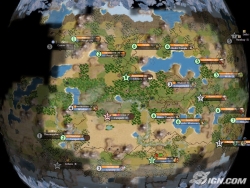
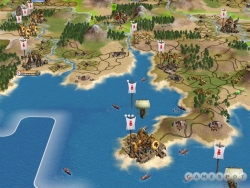
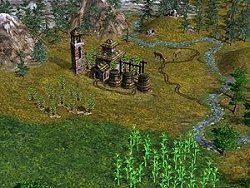
- Music for Civilization IV is also a major focus. Jeff Briggs (Firaxis’ CEO) himself is taking charge of this aspect of the game (and he is perfectly suited to do so as well, since this was his first career). Jeff anticipates that Civ4 will have much more music than any other game ever released. The game will include music from some of Jeff’s original compositions, as well as licensed performances by old greats such as Bach, Mozart, Beethoven, company, as well as contemporary greats like John Adams and Christopher Tin. Here is Civ4‘s opening soundtrack: Baba Yetu.
- Jeff will also be composing the music for all 28 wonder movies included in the game as well as all of the game’s diplomacy music.Where possible, folk tunes are used to represent the character and attitude of each Civilization and each ruler. The music for Franklin D. Roosevelt for instance is the Marine Hymn. Jeff has also gone as far as to arrange each piece of music to fit the various time periods of the game. If you meet with Roosevelt in the early part of the game, you’ll hear ancient instruments playing the theme. By the end of the game, the tune will have swelled and taken on a more Sousa-like quality.
- Firaxis is also hiring voice talent for various game parts. Ambient sounds can also be heard, when you are over different terrains. For example, if you are over the ocean or on its shore, you will hear waves splashing and breaking up. When you are over desert closer up, you will naturally hear very dry winds.
- When clicking on a unit, that unit will respond in the language
of your selected region or Civilization. - With each built improvement you’ll hear a sound related to it
when it is accomplished.
User Interface & Control
Control is a very important aspect for any game. With Civ4’s new interface, ruling you empire just got a whole lot easier.
- To start a Single-Player game: You must choose your map style (some
options are: Archipelago, Continents, Custom Continents, Highlands, Great Plains, Inland Sea, Lakes, Oasis, Pangaea, and Terra) and size, climate and sea level and Civilization you want to play. You can also select whether you want aggressive AIs, Random Personalities, etc. Also, AI personalities are stored in XML data files.- In the “Custom Game” menu (there is also a “Play Now!” option which allows you to start games quicker) there are a variety of options and combinations. In regards to map scripts there are much more. The “Custom Continents” option allows you to select exactly how many continents you want in the game. The “Highlands” map scripts allows you to select everything from mountain density to lake size. Of course, the most random map options you have are the classic “Archipelago,” the basic “Continents” setting, as well as the regular “Pangaea” option which allows you to also set in different shore options.
- There also the “Aggressive” AI setting where AIs lean towards war instead of diplomacy.
- While in the process of loading, the game will display tips for certain things from Hot-Key commands to strategies during war-time. Here is a screenshot which shows some of these. Note that when the game actually starts, you have a very similar Civilization introduction as in Civ3. You can see what I mean by clicking here.
- At the start of the game, you do not start with a Worker unit as in Civ3. You must build your first one at the time of your own choosing. Note that whenever building a Settler or Worker, these units both use Hammers and Excess food to be built instead of Hammers only. The city also does not grow during this period, and when either of the units is complete, the city size does not shrink like it used to in Civilization III.
- The Civilopedia is now available from the main menu of the game for easy access.
- The general layout of the interface is this:
The Mini-Map is on the bottom-right corner, unit statistics are on the bottom-left side, unit control and buttons are on the bottom center of the screen. On the top-right, we see a “?” sign (which indicates the Civilopedia. The Civilopedia is like the game’s manual. It includes all available information on the game) as well as the year and era. Technological research are located on the top, in the center. And finally the scientific research rate buttons are on the top-left side. On the same side, you can also find your income and Gold Per Turn (or “GPT”). There also appear to be landscape characteristics on the bottom-left side. This most likely appears as the player rolls over the terrain with the mouse. Here is a screenshot of the lower portion of the interface only. For City interface information, click here.- The classic unit controls such as Disband, Fortify, Explore and Sentry also appear to be on the center of the screen at the bottom. There are a few more, but we do not know what they do at this point.
- The main Interface can also be collapsed so the player only sees the unit buttons/controls/promotions on the very bottom of your screen. You can see this in the GameSpot Game-play Footage 3 video.
- Also in the same video you can see all the Civilopedia Sections. The sections are: Technologies, Units, Buildings, Resources, Improvements, Promotions, Unit Categories (such as Melee), Civilizations, Leaders, Religions, Civics, Projects, and finally Game Concepts.
- In Civilization IV you can left click on a unit, and then right click on the tile you’d like that unit to go.
This is very different compared to Civilization III. - Advisor screens: depending on which you open, you can see where all of your units are on a global map, or look at raw statistics like the average life expectancy of your people (versus the world average), your gross national product or approval rating.
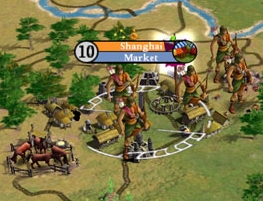 A more streamlined and intuitive interface should be familiar to any RTS player. This is one feature that will make the franchise more accessible and in line with PC gaming trends. In general, theinterface and help screens are more modern, improved, and easier to use.
A more streamlined and intuitive interface should be familiar to any RTS player. This is one feature that will make the franchise more accessible and in line with PC gaming trends. In general, theinterface and help screens are more modern, improved, and easier to use.
- Many tool-tips and pop-up help features are available (such as the terrain characteristics I explained just above, and the ones you can see in the screenshot). Firaxis feels you should be able to play from the main map, and use other screens only if you are a true power user. All this is aimed at getting new players off and playing as quickly as possible. Again, this is the “what-you-see-is-what-you-get” concept. Below, in the next section, you will see that this concept is carried onto the Terrain Improvements as well.They will basically animate if a citizen is working that tile.
- Sid Meier’s Tips on tool-tips (such as Units and Technologies) are included. This option can of course be turned off via the preferences screen. The preferences screen also allows the player to enable Single-Unit graphics instead of Multi-Unit graphics.
- Numerous Advisor pop-ups also appear during the game which will recommend to you to build a certain building in a particular city or town. You can disable these if they are unneeded to you or become too annoying.
- The game will prompt you to construct improvements if it sees an opportunity or it feels that you’ve missed an opportunity.
- Playing the game either with a keyboard only or mouse only is easy (or you can of course use the two combined).
- By default you’ll be moving units with the right mouse button. However in the preferences section, you can change that so you can move units with the left mouse button and have a right-click menu when clicking the right.
- Wide-Screen resolutions are supported (as well as any other resolution you might be running your PC on. Civ4 also supports Dual-Monitor play. The game has to be in windowed mode and you have to give it a resolution which covers both screens.
- Hot-Key commands: Just about 100.
- City information such as its buildings, and workforce is now all accessible from the main screen. You are able to see what a city is building as well, including what state of religion it is in (although Cities can have more than one religion). To the right is an example of Shanghai building a Market. It is also Buddhist (as the icon above the city name displays).
- Adjusting what you want to displayed on the map is easy. This includes city names and sizes. You can limit everything to a maximum and allow only Units, Cities (with no names), and Roads to be displayed. You can also turn on an option to display the properties of different tiles, you will also be able to turn on a resource plot location feature, mentioned here.
Landscape Characteristics
To expand your empire, first you would need as much detail about the terrain as possible.
- More tile/terrain improvements areincluded (each resource has its own specific improvement). Pastures, Wineries, Watermills, Windmills, Lumber Mills, Mines,
Fishing Nets, Offshore
Platforms,
and Factories
are all represented in detail onthe terrain. 20 improvements in all are going to be included. Improvements being worked on with citizens will animate,
which makes it convenient
to see
where your citizens are working. For example, if a Mine is being worked on by
a citizen, you will see smoke coming out of its chimney.
Details such as mine carts being pushed out of a mine are also available.
This interface feature even helps you during war time, allowing the player
to see which tile an enemy is using. Certain Technologies will make someimprovements more productive as well.
- Roads and Rail-Roads will only provide a movement bonus
to your units and nothing else. This has been done so the player does not have Roads and Rail-Roads on every tile later on
(unlike in Civilization III). -
Camp
Requires: Hunting
Effects: Pillage yields 5 gold on average
Bonus Yields: Deer (+2 food, +1 health), Fur (+3 commerce, +1
happiness), Ivory (+1 hammer, +1 commerce, +1 happiness)- Hamlet: +2 commerceRequires: Nothing
Effects: Becomes a Village in 20 turns, Pillage yields 15 gold on
average
- Village: +3 commerce, and +1 additional commerce with
Printing Press
Requires: Nothing
Effects: Becomes a Town in 40 turns, Pillage yields 20 gold on average
- Town: +4 commerce, +1 commerce with PrintingPress, +2
commerce with Free Speech, +1 hammer with UniversalSuffrageRequires: Nothing
Effects: Pillage yields 25 gold on average
Farm:
+1 food with irrigation, +1 additional food with BiologyRequires: Agriculture
Effects: Carries Irrigation, May be built only on flatlands, Pillage
yields 5 gold on average
Bonus Yields: Corn (+2 food, +1 health), Rice (+1 food, +1 health),
Wheat (+2 food, +1 health)
Fishing Boats
Requires: Fishing
Effects: May be built in water only, Pillage yields 5 gold on average
Bonus Yields: Clam (+2 food, +1 health), Crab (+2 food, +1 health), Fish
(+3 food, +1 health)Fortress
Requires: Mathematics
Effects: +25% defense on tile it is built onLumbermill:
+1 hammer, +1additional hammer with a Railroad, +1 commerce when next to
River
Requires: Replaceable Parts
Effects: Pillage yields 5 gold on averageMine:
+2 hammers, +1 additional hammer with Railroad
Requires: Mining
Effects: Small chance of discovering Aluminum, Coal, Copper, Iron,
Uranium, Gems, Gold, or Silver on that tile; Pillage yields 10 gold on
average
Bonus Yields: Aluminum (+3 hammers, +1 commerce), Coal (+3 hammers),
Copper (+3 hammers), Iron (+3 hammers), Uranium(+3 commerce), Gems (+1
hammer, +5 commerce, +1 happiness), Gold (+1 hammer, +6 commerce, +1
happiness), Silver (+1 hammer, +4 commerce, +1 happiness)Offshore PlatformRequires: Plastics
Effects: May be built in water only, Pillage yields 10 gold on average
Bonus Yields: Oil (+2 hammers, +1 commerce)Pasture
Requires: Animal Husbandry
Effects: Pillage yields 5 gold on average
Bonus Yields: Horse (+2 hammers, +1 commerce, +1 health), Cow (+1 food,
+2 commerce, +1 health), Pig (+3 food, +1 health), Sheep (+2 food, +1
commerce, +1 health)Plantation
Requires: Calendar
Effects: Pillage yields 5 gold on average
Bonus Yields: Banana (+2 food, +1 health), Dye (+4 commerce, +1
happiness), Incense (+5 commerce, +1 happiness), Silk (+3 commerce, +1
happiness), Spices (+1 food, +2 commerce, +1 happiness), Sugar (+1 food,
+2 commerce, +1 happiness)Quarry
Requires: Masonry
Effects: Pillage yields 5 gold on average
Bonus Yields: Marble (+1 hammer, +2 commerce), Stone (+2 hammers)Railroad:
Maximum of 10 turn movement and just like roads, makes trade networks
(between cities, Civilizations, etc)
Requires: RailroadsRoad: Faster Movement and a may create trade networks (between
cities, Civilizations, etc)
Requires: The WheelWatermill: +1 hammer, +1 additional hammer
with Replaceable Parts, +2 commerce with Electricity, +1 food with State
Property CivicRequires: Machinery
Effects: Requires to be built by a River, May only be built on
flatlands, Pillage yields 5 gold on averageWell
Requires: CombustionEffects: Pillage yields 10 gold on average
Bonus Yields: Oil (+2 hammers, +1 commerce)Whaling BoatsRequires: Optics
Effects: May only be built on water, Pillage yields 5 gold on average
Bonus Yields: Whale (+1 hammer, +2 commerce, +1 happiness)Windmill: +1 food, +1 commerce, +1 additional commerce with
Electricity, +1 hammer with Replaceable Parts
Requires: Machinery
Effects: Pillage yields 5 gold on average
Winery
Requires: Monarchy
Effects: Pillage yields 5 gold on average
Bonus Yields: Wine (+1 food, +2 commerce, +1 happiness)
Workshop:
-1 food, +1 additional food with State Property Civic, +1 hammer, +1
hammer with Guilds, +1 hammer with Chemistry
Requires: Metal Casting
Effects: May be built only on flatlands, Pillage yields 5 gold on
averageMisc. Terrain Features Affect
Tribal VillageProvides bonuses such as more
experience points for the unit that uncovered it, maps, technologies,
etc. (Goody Huts, or Tribal Villages,
cannot be built by the player.)City Ruins Sites of razed cities remain on the map
(when you first capture a city, you may raze it, however this can be
turned off so there is no city razing).Worked Tile Worked tiles have their own animations and icons.
For example, if a Quarry is worked, the crane will move. If it is not,
the crane will not move. - Hamlet: +2 commerceRequires: Nothing
- There are many new resources. When you are zoomed out to
the Global View, resources areclearly marked for easy identification if you choose to mark them. - There is less restriction when it comes to resources. Firaxis will probably give players something tosynthesize Oil, and Gunpowder
units
no longer
require saltpeter.
- All resources, including food ones are tradable. Food resources will help your city’s health status.
- Securing the seven types of food resources can also lead your
cities to become more healthy, as they represent nutritional variety. Each
different food resource decreases your unhealthy population by one.
- Securing the seven types of food resources can also lead your
- Better resource balance: Since Python Scripts are used to generate random maps, resource placement can befine-tuned. This means
that a
resource of
one group cannot be a certain distance from a resource from the same group (comparing
luxury with luxury, food with food, strategic with strategic).
The Civ3 dilemma where one faction gets more resources than another seems to be gone. Resource migration will alsonot happen
anymore.
Resource Strategic Resources Aluminum:
+1 hammer
Improvements: Mine (+3 hammers, +1 commerce)
Requires: Industrialism (reveals it), Mining (enables Mine)Allows: Modern Armor, Jet Fighter, Stealth BomberCoal:
+1 hammerImprovements: Mine (+3 hammers)
Requires: Steam Power (reveals it), Mining (enables Mine)
Allows: IroncladCopper: +1 hammer
Improvement: Mine (+3 hammers)
Requires: Bronze Working (reveals it), Mining (enables Mine)Allows: Axeman, Maceman, Spearman, Phalanx
Horse: +1 hammerImprovement: Pasture (+2 hammers, +1 commerce)
Requires: Animal Husbandry (both reveals it and enables Pasture)
Allows: Chariot, War Chariot, Immortal, Horse Archer, Keshik, Knight,
Conquistador, Cavalry, CossackIron:
+1 hammer
Improvement: Mine (+3 hammers)
Requires: Iron Working (reveals it), Mining (enables Mine)Allows: Swordsman, Praetorian, Axeman, Maceman, Samurai, Spearman,
Phalanx, Pikeman, Crossbowman, Cho-Ko-Nu, Knight, Conquistador, Cannon,
Frigate, IroncladMarble: +1 hammer
Improvement: Quarry (+1 hammer, +2 commerce)
Requires: Masonry (enables Quarry)Allows: Some city buildings get built faster with MarbleOil:
+1 hammer
Improvements: Well (on land; +2 hammers, +1 commerce), OffshorePlatform(on water; +2 hammers, +1 commerce)Requires: Scientific Method (reveals it), Combustion(enables Well),
Plastics (enables Offshore Platform)
Allows: Tank, Panzer, Modern Armor, Gunship,Transport, Destroyer,
Battleship, Submarine, Carrier, Fighter,Stone:
+1 hammer
Improvement: Quarry (+2 hammers)
Requires: Masonry (enables Quarry)Allows: Some city buildings get built faster with StoneUranium
Improvement: Mine (+3 commerce)Requires: Physics (reveals it), Mining (enables Mine)
Allows: Transport, Destroyer, Battleship, Submarine, Carrier, ICBMLuxury Resources Dye:
+1 commerceImprovements: Plantation (+4 commerce, +1 happiness)
Requires: Calendar (enables Plantation)Fur: +1 commerce
Improvement: Camp (+3 commerce, +1 happiness)
Requires: Hunting (enables Camp)Gems: +1 commerce
Improvement: Mine (+1 hammer, +5 commerce, +1 happiness)
Requires: Mining (enables Mine)Gold:
+1 commerce
Improvement: Mine (+1 hammer, +6 commerce, +1 happiness)
Requires: Mining (enables Mine)Hit Movies
Require: Hollywood
Effects: +1 happinessHit Musicals
Require: Broadway
Effects: +1 happinessHit SinglesRequire: Rock & Roll
Effects: +1 happinessIncense: +1 commerce
Improvement: Plantation (+5 commerce, +1 happiness)
Requires: Calendar (enables Plantation)Incense: +1 commerce
Improvement: Plantation (+5 commerce, +1 happiness)Requires: Calendar (enables Plantation)Incense: +1 commerce
Improvement: Plantation (+5 commerce, +1 happiness)
Requires: Calendar (enables Plantation)Ivory: +1 hammer
Improvement: Camp (+1 hammer, +1 commerce, +1 happiness)
Requires: Hunting (enables Camp)Allows: War ElephantSilk: +1 commerce
Improvement: Plantation (+3 commerce, +1 happiness)Requires: Calendar (enables Plantation)Silver:
+1 commerce
Improvement: Mine (+1 hammer, +4 commerce, +1 happiness)Requires: Mining (enables Mine)Spices: +1 commerce
Improvement: Plantation (+1 food, +2 commerce, +1 happiness)Requires: Calendar (enables Plantation)Sugar: +1 food
Improvement: Plantation (+1 food, +1 commerce, +1 happiness)Requires: Calendar (enables Plantation)
Whale: +1 foodImprovement: Whaling Boats (+1 hammer, +2 commerce, +1 happiness)Wine:
+1 commerce
Improvement: Winery (+1 food, +2 commerce, +1 happiness)Requires: Monarchy (enables Winery)Food Resources Banana: +1 food
Improvement: Plantation (+2 food, +1 health)
Requires: Calendar (enables Plantation)Clam:
+1 food
Improvement: Fishing Boats (+2 food, +1 health)Corn:
+1 food
Improvement: Farm (+2 food, +1 health)
Requires: Agriculture (enables Farm)Cow: +1 food
Improvement: Pasture (+1 food, +2 hammers, +1 health)
Requires: Animal Husbandry (enables Pasture)
Crab: +1 food
Improvement: Fishing Boats (+2 food, +1 health)Deer:
+1 food
Improvement: Camp (+2 food, +1 health)
Requires: Hunting (enables Camp)Fish: +1 food
Improvement: Fishing Boats (+3 food, +1 health)
Pig: +1 food
Improvement: Pasture (+3 food, +1 health)
Requires: Animal Husbandry (enables Pasture)Rice:
+1 food
Improvement: Farm (+1 food, +1 health)
Requires: Agriculture (enables Farm)Sheep:
+1 food
Improvement: Pasture (+2 food, +1 commerce, +1 health)
Requires: Animal Husbandry (enables Pasture)Wheat:
+1 food
Improvement: Farm (+2 food, +1 health)
Requires: Agriculture (enables Farm) - Trading is established automatically when you make deals. Rivers are like roads in Civ4 (in terms of their trade potential), so if two cities are on one river, they are
connected and no road is needed to establish the particular trade network.
- Due to the expanded aspect of tradinginvolving Rivers (making them like roads in terms of connectivity), City placement in
Civ4 is made much more strategic. If ariver connects to a lake, then a worker is able to build a road to the lake and expand the Civilization’s Trade
Network.
- Due to the expanded aspect of tradinginvolving Rivers (making them like roads in terms of connectivity), City placement in
- Defensive bonuses will now only be generated on Forests, Hills, and Jungles.
Since this also relates to the combat system, click here to go to that
section of the article. - Here are the known terrain types, as well as other information
regarding the terrain:Terrain Coast:
+1 food, +2 commerceSpecial Abilities: Defending units receive a 10% strength boostDesert
Special Abilities: +1 commerce if by River, Improvements take 25% more
time to buildGrassland: +2 food
Special Abilities: +1 commerce if by RiverIce
Special Abilities: Improvements get built 50% slower to completeOcean:
+1 food, +1 commercePlains:
+1 food, +1 hammerSpecial Abilities: +1 commerce if by a RiverTundra:
+1 food
Special Abilities: +1 commerce if by a River, Improvements are 25% slower
to get constructedTerrain Features Fallout: -3 food, -3 hammers, -3 commerce
Special Abilities: Movement is decreased by 2, +0.50 unhealthiness in
nearby cities, Improvements cannot be built on a tile containing FalloutFlood
Plains: +3 food
Special Abilities: +1commerce if by a River, +0.40 unhealthiness in nearby
citiesForest:
+1 hammerSpecial Abilities: Movement decreased by 2, +0.50 health in nearby cities,
+50% strength for units stationed thereIceberg
Special Abilities: Impassible TerrainJungle:
-1 food
Special Abilities: Movement decreased by 2, +0.25 unhealthiness in nearby
cities, Units stationed there receive +50% strengthOasis:
+3 food, +2 commerceSpecial Abilities: Movement cost decreased by 2, source of fresh water,
cannot build cities or improvements on Oases
Victory or Defeat?
It all comes down to this: Achieving it against the AI earns you ego. Achieving it against another player earns you
respect.
- There are a lot more difficulty levels than in previous Civilization games.
Settler, Chieftain, Warlord, Noble, Prince, Monarch, Emperor, Immortal, and
Deity are the available difficulties now. - The length of games is reduced from 540 turns (as in Civilization III) to 430. You are able to start in any era you wish
(Ancient, Classical, Medieval, Industrial, Modern, Future. You start with a
different amounts of units in each era, you will have more population in
newly founded cities, as well as a few more buildings). Later era starts will give you larger starting cities, moresettlers, and of course
more techs. They will also have some limitation – earlier wonders and buildings may not be available. The developers
are also constantly working to even out the pace of the game, hence the speed options described below.
- There are four game speeds: Quick (mostly for Multiplayer, in Single Player mode (orSP) it is equal to
Civ3‘s Accelerated Production mode), Medium (a bit faster than Civ3,
15-20 hours of game-play), Epic (around 600 turns) and Marathon (introduced
in patch v1.52). All of the game speeds (Quick, Normal, and Epic) retain all the flavor of Civ itself. So even
though the speed is different, the feel will not change. - The different speeds of the game (Quick, Normal, and Epic) will
have their Technology costs, Unit production costs, and Building appropriately tuned for the appropriate speed of thegame. - The game still spans from 4000BC to 2050AD. That means you have 6,050 years to achieve one of the victoriesbelow.
- Civilization IV seems to have struck the balance between explored land and years passed. What this meansis that no longer will
you have the entire world explored by 400AD. This, by the way, is the same for all three speeds (Quick, Medium, &
Epic).
- There are four game speeds: Quick (mostly for Multiplayer, in Single Player mode (orSP) it is equal to
- Most of the victory conditions have not changed from Civ3.
Here they are:- The Time Victory: One can win this by having the highest score at 2050.
- The Conquest Victory: By eliminating all rival Civilizations, you have achieved this victory.
- The Domination Victory: This is awarded when you have a 25% lead in population over their best competitor, and65% of the global landmass.
- The Cultural Victory: You can achieve this by having three cities with a
50,000-point Culture rating. - The Spaceship Victory: Having first built all the components of a Space Ship and launching it to AlphaCentauri, earns you thisvictory.
- The Diplomatic Victory: After building the United Nations Great Wonder, your Civilization is voted on to takecontrol over thatorganization. Since it is
difficult to maintain good relations with all Civilizations (especially in large games), this is possibly the most
difficult
victory condition to achieve.Click on the United Nations link for more information
on that wonder.
- Winning the game also gives you a movie (no matter how you chose to win it).
- The Spaceship (which is required for this) contains about a dozen componentstotal. Some of the parts are: SS Casing, SS Cockpit, SS Docking Bay, SS Engine,
SS Life Support, SS Stasis Chamber, and the SS Thrusters. You may boost production on this by constructing Laboratories inyour cities or byconstruction the Space Elevator Great Wonder, which boosts Spaceship
partproduction in all of your cities.
- The game will calculate a running score for each Civilization. This is based on
the following details: Civilization size, technology, military power, and more. Ifyou leave your Civilization lightly defended or with obsolete units, other nations will take advantage of this. - There is still a replay at the end of the game (when it is won or lost), and after each game the replays are savedso you can later viewthem in the “Hall of
Fame” and look at how well you did in different games. They show things such as the appearance of Great People, City
foundations, Civs being
wiped out, etc. The Hall of Fame screen not only remembers every game’s
statistic under your profile (you can create different profiles in Civ4). It
remembers Difficulty Level, Game Speed, Victory Achieved, Starting Era,
World Size, Finish Date, as well as the Score Itself and more. It also saves
every game’s replay so you can look back to any previous game which you have
finished and watch how you developed. The score, by the way, is broken down
in a detailed manner in-game as you move your mouse cursor over your name
(the score is broken down to Population, Land, Technologies, Wonders, etc).
These can also be saved separately from a regular game save and you can send
these to other people.
The 18 Civilizations
There are a lot of opportunities in the game to form allies, and that is necessary to fend off enemies.
-
- 18 playable Civilizations are featured in Civilization IV.
- There are 26 world leaders. Choosing between two leaders for a
Civilization is a possibility. You can choose from two leaders from each Civilization, however not every Civilizationhastwo leaders.
- You can name the leaders after yourself, and
pretty much name everything else throughout the game…
- There are 26 world leaders. Choosing between two leaders for a
- Unique Units for each Civilization are still in the game. Some of
the known Unique Units (or “UUs”) are below in the Civilization Chart. - You are able to see more of the leaders bodies, unlike in
Civilization III, where one could not see them make hand and finger movements. Anexample of this can be seen when watching the “Game-PlayFootage 2″ video at GameSpot. Leader animations will also reflect their mood and natural personality.
- Anoffer in
the favor of Louis XIV or Hatshepsut will show animations of the leaders that suggest their happiness with the deal. Theywill simply act
pleased.
However some rulers are a bit more inscrutable. The only difference in personality you will see in the Chinese ruler, QinShi Haug is the
elevation
of his eyebrows… the same as the Mongol leader Genghis Khan. Rulers like
Alexander the Great of the Greeks and Julius Caesar of the Romans are much
more expressive in their emotions. Julius will give you a gladiatorial
thumbs-up or thumbs-down in reaction to your proposal. Gandhi is generous
to weaker nations, while Genghis Khan will shy away from any diplomacy at all.
Basically, there are a variety of unique personalities, some warlike,
peaceful, trustworthy, etc. You can also select Random Personalities at the
start of the game so every leader acts differently than what they usually do.
- Anoffer in
- Units of different nationalities can now share tiles. If you have open borders with a Civilization, your units canliterally go to any
tile (even in Cities!).
- All the known
Civilization properties have been listed below. Each
Leader has two Traits. Each of these grants them a unique bonus and cuts the
cost of two city improvements by half. Here are the statistics, and both of
the following charts are brand new:
- 18 playable Civilizations are featured in Civilization IV.
| Civilization & Cities | Leader 1 (Traits) |
Leader 2 (Traits) |
Unique Unit | Starting Techs | Flag |
|---|---|---|---|---|---|
| AmericaWashington, New York | GeorgeWashington(Financial & Organized; favors Universal Suffrage)
|
Franklin D.Roosevelt(Industrious & Organized; favors Universal Suffrage)  |
Navy SEAL; replaces the Marine | Fishing & Agriculture |  |
| ArabsMecca | Saladin (Philosophical & Spiritual; favors Theocracy)  |
-none- |
Camel Archer; |
Mysticism & The Wheel |  |
| AztecsTenochtitlan, Tlatelolco, Teotihuacan | Montezuma (Aggressive & Spiritual; favors PoliceState)
|
-none- |
Jaguar; replaces the Swordsman | Mysticism & Hunting |  |
| ChinaBeijing, Canton, Shanghai, Tientsin, Tsingtao, Xinjian, Turfan |
Mao Zedong (Philosophical & Organized; favors State Property)  |
Qin Shi Huang (Industrious & Financial; favors Police State) 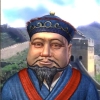 |
Cho-Ku-Nu; replaces the Crossbowman |
Agriculture & Mining |  |
| EgyptThebes, Memphis, Alexandria, Elephantine, Pi-Ramesses, Byblos |
Hatshepsut (Spiritual & Creative; favors Hereditary Rule)  |
-none- |
War Chariot; replaces the Chariot |
Agriculture & The Wheel |  |
| EnglandLondon, Hastings, Warwick, Newcastle |
Queen Victoria (Expansive & Financial; favors Representation)  |
QueenElizabeth(Philosophical & Financial; favors FreeReligion | Redcoat; replaces the Rifleman | Fishing & Mining |  |
| FranceParis, Orleans | Louis XIV (Creative and Industrious; favors Hereditary Rule)  |
Napoleon (Aggressive & Industrious; favors Representation)  |
Musketeer; replaces the Musketman | Agriculture & The Wheel |  |
| GermanyBerlin,Cologne, Munich, Dusseldorf | Frederick (Creative & Philosophical; favors Universal Suffrage)
|
Bismarck (Expansive & Industrious; favors Representation)  |
Panzer; replaces the Tank | Hunting & Mining |  |
| GreeceAthens, Thermopylae | Alexander (Aggressive & Philosophical; favors HereditaryRule)  |
-none- |
Phalanx; replaces the Spearman | Fishing & Hunting |  |
| Inca | Huayna Capac (Aggressive & Financial; favors Hereditary Rule) 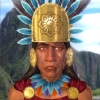 |
-none- |
Quechua; replaces the Warrior | Agriculture & Mysticism |  |
| IndiaDelhi, Bangalore, Bombay, Calcutta, Madras, Jaipur |
Mahatma Gandhi (Industrious & Spiritual; favors UniversalSuffrage)  |
Asoka (Organized & Spiritual; favors Universal Suffrage)  |
Fast Worker; replaces the standard Worker | Mysticism & Mining |  |
| JapanTokyo, Kyoto, Osaka, Edo | Tokugawa (Aggressive & Organized; favors Mercantilism) 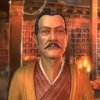 |
-none- |
Samurai; replaces the Maceman | Fishing & The Wheel |  |
| Mali Timbuktu, Djenne, Gao, Kumbi Saleh, Niani, Tadmekka, Walata |
Mansa Musa (Financial & Spiritual; favors FreeMarkets)  |
-none- |
Skirmisher; replaces the Archer | Mining & The Wheel |  |
| MongoliaKarakorum, Herat, Khanbalik, Old Sarai,Samarqand | Genghis Khan (Aggressive & Expansive; favors Police State) 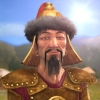 |
Kublai Khan (Aggressive & Creative; favors HereditaryRule)
|
Keshik; replaces the Horse Archer | Hunting & The Wheel |  |
| PersiaPersepolis, Susa, Pasargadae, Arbela, Bactria, Gordium, Tarsus |
Cyrus (Expansive & Creative; favors Representation) |
-none- |
Immortal; replaces the Chariot | Agriculture & Hunting |  |
| RomeRome, Antium, Cumae, Neapolis, Pisae |
Julius Caesar (Organized & Expansive; favors Representation)  |
-none- |
Praetorian; replaces the Swordsman |
Fishing & Mining |  |
| RussiaMoscow, Novgorod, St. Petersburg, Rostov |
Catherine(Creative & Financial; favors Hereditary Rule) |
Peter(Expansive & Philosophical; favors Police State)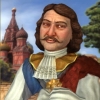 |
Cossack; replaces the Cavalry | Hunting & Mining |  |
| SpainMadrid, Barcelona, Toledo, Salamanca, Santiago, Murcia, Cordoba, Seville, Zaragoza |
QueenIsabella(Expansive & Spiritual; favors PoliceState |
-none- |
Conquistador; replaces the Knight |
Fishing & Mysticism |  |
| BarbariansCherokee, Phoenicians | – | – | – | – |  |
- Barbarians in Civilization IV are not able to develop a full culture
like the main 18 competing Civilizations, however you will see them forming
independent cities and small militias. They are like a “mini-Civ” that can cause trouble at any time. - Barbarians may also capture and control your cities as well as the obvious pillaging of your improvements if you find them in your territory.
- Animal attackers (which pose a similar threat as Barbarians do), such as Lions, Bears, Jaguars and wolves
are present early on in thegame.
- Animal attackers (which pose a similar threat as Barbarians do), such as Lions, Bears, Jaguars and wolves
Artificial Intelligence
Perhaps a significant component of good game-play is a good AI. The AI is much improved in the new game…
- Improving the AI has been a large priority. For months now, much focus has been dedicated to it.
- The AI now seems to be blind. It does not know where certain things appear (unlike in Civilization III. Onhigher levels, the AI
still
receives production bonuses. In the end, rest assured, you are playing against a smarter AI, not a more cheatingone.
- The AI is more interactive and it will contact you much more often for various things in its interest.
- The AI will no longer attack in a few huge stacks of units. Instead you will now see the AI attacking in steadywaves of units that just
keep coming!
- The AI attitudes toward you can be either Friendly, Pleased, Cautious, Annoyed, or Furious). This the reasons forthis are, again, very
clearly laid out in the diplomacy window.
- Selecting AI Random Personalities is also a possibility at the start of the game. This way, you do not knowhow the AI will behave
(Gandhi may not always be
polite, and Genghis Khan may not be warlike!). - The City Governor AI will also be more improved to assist you better. And that is an important part, becauseit naturally allows
you to
micro-manage less. And another main goal of Firaxis is to kill player micro-management.
When in the
Bargaining Table, you can now see why the leader’s
attitude is the way it is. Here is a positive point in the relationship and attitude: “+1 Years of peace havestrengthened ourrelationship.” Here are also a few negative
points which may occur: “-1 Our close borders spark tension,” “-3 We are upset that you have fallenunder the sway of a
heathen religion,” “-1
You have traded with our worst enemies!” These can be seen here.
Basically, the positive points are: If you have the same religion with that
Civ, similar Civics, resource trading, fair trade relations, years of peace.
The negative points may be: If you have a different religion than that Civ, if
you have traded with an enemy of that Civ, closed borders (they spark
tension), refuse to stop trading with a certain Civ. Different leaders will place different weights on these factors.
There are true hard feelings in this system, and it is much harder to simply
bribe an AI in diplomacy in order to make it do what you want it to do.- The game is sped up thanks to faster AI moves during the
Middle and Late stages of the game. Some features tended to slow down the late game.
They have been removed (for example: pollution cleanup, city riots, and units disbanding due to money issues). This meansthe late game
is just asenjoyable
to play as the rest of the game.
International Affairs
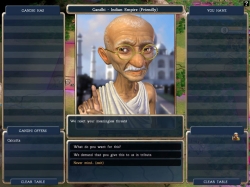 Above, the AI and Diplomacy virtually go hand in hand. Both are also improved… which means a much more
Above, the AI and Diplomacy virtually go hand in hand. Both are also improved… which means a much more
powerful
system.
- The AI must respect your borders or declare war in
Civilization IV. AI’s did not have to respect your border at all in
previous Civilization titles. Look back at any game and most players will see frustration of how the AIkept wondering around in your own border, without you being able to do anything
about it. - If you have a Defensive Pact with someone, and they get attacked, you will have the option to back down andnot get involved in
that war. This will
of course damage your reputation, but remember that in Civ3 you absolutely had to get into a war
no matter what. - Negotiating peace in diplomacy is now possible between two Civilizations which are at war with each other.On the other hand, it
is also
possible to make two other Civilizations go to war, even if you do not wish to get involved at all.
- Your military still plays a large role in Civ4 however it has been balanced out with other options,such as diplomacy. A
lot of
emphasis has been put in in balancing different aspects of the game so the player does not focus on one
aspect more than on another. - Trading made easy: There is a new screen that explainswhat other Civilizations have to offer and what they want to trade for (it also
tells you what technologies and resources the AIs have). This is all in the
foreign advisor screen. This screen also tells you the AI relations toward
you, current ongoing deals, etc. - The player may gift units to the AI by moving a unit in their territory and pressing the “Gift” button whichautomatically makes that unit
theirs.
- The diplomatic victory condition is triggered by construction of the United Nationsgreat wonder. When it is
first constructed, a Secretary General is
elected (every Civilization gets a vote during this. The builder of this does
not automatically get to be the secretary General). If you get elected, you can get various resolutions passed.
Here they are:- Free Trade – Free Trade removes all trading restrictions in the world between allCivilizations. It
basically functions as if all Civilizations have open borders – No matter what their real diplomatic relationship may
be.
- Nuclear Non-Proliferation – As Thunderfall’s article has mentioned already, adopting this means that no nukes may be built, howeverexisting nuclear weapons
are not destroyed. Note that if this resolution passes before any nuke is built in the world, it means that the game itself
will proceed without
nukes appearing. This may be a benefit to you if you’re playing against aggressive Civilizations.
- Universal Suffrage – All Civilization’s civics are changed to Universal Suffrage (+1Hammer from Town; Can
spend gold to finish production) no matter if they have the required technology for that specific Civic (this counts for
all UN Resolutions
relating to Civics).
- Free Speech – All Civilizations adopt the Free Speech Civic (100% culture
in all cities; +2 gold from Town). - Emancipation – All Civilizations switch to the Emancipation Civic ((100%
Growth for Cottage, Hamlet, Village; Unhappiness for civs without that civic). - Environmentalism – All Civilizations adopt the Environmentalism Civic
((+6 health in all cities; +1 happiness from jungle, forest). - And finally, Free Religion – All Civilizations Adopt this Civic (No
non-state religion spread; +1 happiness per non-state religion in a city, +10%
science in all cities).
If you fail to get elected, you have to wait until the next election. You can use the UN as a diplomatic
tool to force other nations to adopt certain policies which they normally wouldn’t.
Note that after every three resolutions, a new Secretary General is up for
election. - Free Trade – Free Trade removes all trading restrictions in the world between allCivilizations. It
- Building Spy units is possible just like in Civilization II (they
now have a movement of two and cost 80 Hammers).
The player is limited to the number of Spies you can have in the game. Before
construction the player must have the following: Communism and the Scotland Yard
National Wonder, meaning every Civilization may build its own (500 Hammers; +1
Great People Points; More likely to generate a Great Scientist). You are allowed
to have a maximum of four spies at any one time. They are invisible to other
Civilizations just like Submarines. These units cannot be attacked or interacted
with, however they can be exposed by rival Spies (you are able to expose enemy
Spies as well). Other abilities of the Spy unit include:- Investigate City – This is rather basic. It allows you to have a peek inside anenemy city and see all
its properties (what it is producing, Culture
amount, what unit it has, etc, etc). - Destroy Production – If you order your Spy to destroy the production of whatever a cityis producing (and if
successful), half of whatever is being produced
is destroyed (therefore slowing down dramatically production of, say, a Great Wonder). However, if the Spy fails, it iskilled.
- Sabotage Improvement – If a Spy is ordered to do so, and if successful, a terrainimprovement will be
destroyed (such as a valuable Oil Well). If
unsuccessful, the Spy will be destroyed. - Steal Plans – First of all, the Spy has a much better chance of having success at thisif the action is
taking place in a City which contains either a
Palace (therefore the capitol of that Civilization), a Forbidden Palace, or the Versailles Great Wonder (Requires DivineRight; Reduces
Maintenance in nearby
cities; City in which it is built in is more likely to generate a Great Merchant; Doubled Production speed with the Marbleresource).
The above actions need gold. Success depends on the amount of units the other Civilization has in the area of where the
action is taking place.
Nearby enemy spies
also decrease the amount of success your Spy unit has. - Investigate City – This is rather basic. It allows you to have a peek inside anenemy city and see all
- Other Civilizations have different favored Government and Religious settings, and they will try to pressure players into changing to their favored religion or government to suit their
desires in return for better relations with your Civilization.
They can even ask you to stop using a Civics option you have set.- Leaders will appreciate other leaders that share
their traits and civic or religious choices (as stated above), and they will tend to form blocs. If you find leaders thatshare your tendencies,it will be
possible to form lasting
(even permanent) alliances. - What you choose might affect other Civilizations as well. If you have already introduced Emancipation, it sometimesmay lead to
unhappiness and
revolts
within other nations without Emancipation, but to you, it does not give a direct benefit (so it provides a negative aspectto other Civs, if they
don’t have
it).
Also, if your Civilization is the first to outlaw slavery, that will create discontent in societies that haveslavery.
- Leaders will appreciate other leaders that share
- In diplomacy you can try to make another civ adopt a certain Civic or a Religion that you have. However the AIs aremuch more focused on
their own agenda.
Some Civs care more of your type of religion, others care more about your Civics, others follow whoever has the most money.
AI Civilizations can
even call up
the human player and ask him/her to stop trading with a Civilization they hate. This make the player make decisions which
impact relations a
great deal.
- Filling in the blanks: You can put a deal on the table and then ask the AI
leader to fill in the blanks, no matter what combination is out there. You can also tell when a deal would never happenbecause the choices willshow up in
red on
the list. On a related AI note, Soren Johnson (the Lead Designer for the game) is now totally focused on tweaking theAI.
Controlling Your People… by Decree
All the power is in your hands. What you do with it can lead to your Empire’s victory or your utter demise.
- World Religion, Civics and Great People are things many people have suggested be put into the game, Soren has described these
as
“killer” features in his PowerPoint. These are in Civ4, and they will have an influence on your wholeempire. The factors
which have
a
domestic affect are described below…
- Factors which are not fun in the game such as corruption/waste, rioting, pollution, and maintenance
are started from scratch or removed(this means that they are replaced by a much better concept that maintains game
balance better). Pollution is most affected. It was dumped,although not completely removed. A more extensive health system is something new, although no details about it have
surfaced yet. Annoying
micromanagement tasks will also be decreasing dramatically, and more high-level control
is provided.- The concept of corruption has beenreplaced with
maintenance costs. This time instead of Courthouses being able to reduce corruption (since it is gone) they will actuallylower
maintenance costs.
- The concept of corruption has beenreplaced with
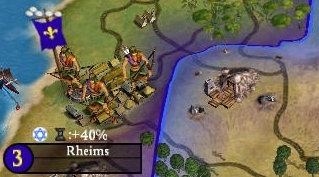 You will have to develop your culture or risk being enveloped by a larger neighbor (so a nationcan be completely
You will have to develop your culture or risk being enveloped by a larger neighbor (so a nationcan be completely
engulfed by another’s
borders).
- The luxury slider is now a culture slider. The more culture you give, the happier your people will be, as well asproducing more culture
for
your entire Civilization, meaning it can also expand your borders more, the more
you increase it (but at the expense of Commerce and Science Research). - Culture basically modifies your borders in relation to the culture of your neighbors, so you can overwhelm yourneighbors with a
superior
culture.
- Culture now also increases a citys defensive value, and it helps smaller cities with more culture feel safer. Sinceit restarts when you
capture a city, your top priority is to maximize culture in that city.
- There is no more Cultural Dominance in flipping Cities. Instead, as your nation expands, foreign cities will beginto become more and more
in
awe with your Civilization as a whole. This will cause the people in those foreign cities to get unhappy, and therefore
their Civilization will
have to
spend money to keep them happy. As this burden gets heavier, that Civilization might just offer to give you their Cities
via diplomacy.
One easy way to counter unrest in your cities due to your neighbors having
superior culture is to station more units into that city. - Culture essentially represents a “Soft Power.” This means that nations can defeat other nations through morepeaceful
means.
- The luxury slider is now a culture slider. The more culture you give, the happier your people will be, as well asproducing more culture
- Health is just as important as maintaining your treasury and the happiness of your people. Health
is tied to available food andresources to simulate Epidemics. However, if you have Fresh Water near you, it will give you a healthbenefit.
- There is a lot of built-in automation in the game (also aimed at reducing micromanagement). Setting units such asthe Warrior to “Auto
Explore” and find
“Goody Huts” (which give you free bonuses such as a Settler, or something else) is a great idea.
- Thanks to automation, when a Worker is available, the player is able to automate the worker and let the artificialintelligence take
control of it. The
worker will then build the best available option on each square, as well as link your cities together by roads.
This improves the pace of the game immensely and is a very efficient process, since you don’t have to worry about manuallymoving the worker (you
can do that
still, however).
- Variety in food can improve your citizens moods making them happier. Entertainers are also available,spending tax dollars to
buy their
happiness and city improvements.
- In total, there are 25 Civics options. There are five categories and five options per each category. The fivecategories are:
Government,
Legal, Labor, Economy, and Religion. Some of the known Civics options are: Free Market, Environment, Slavery, Free Speech,
Conscription,
Emancipation,
Religious Tolerance and the Nationhood (it magnifies culture accumulation). Below is a table of how you will see your
Government system in the
game. Having all these choices means that you will not have “fixed” governments
anymore (simply known as Democracy, Communism, etc in Civ3). Note
that Civics choices have an upkeep cost (depending on the Civic).- Changing to new Civic forms will have a dramatic effect on the character and success of your civilization.You’ll be able to boost
or cut
productivity, wealth, and happiness, make choices to increase/decrease the spread of religion, and even affect yourability to produce and
maintain a
large standing army. It is also never as simple as choosing the only the
highest levels in the Civics section. “…You could end up with a really
great government that puts you in the poorhouse,” saysBarry.
Government Legal Labor Economy Religion Despotism: Low Upkeep Barbarism: Low Upkeep Tribalism: Low Upkeep Decentralization: Low Upkeep Paganism: Low Upkeep Hereditary
Rule: +1 happiness per military unit in city. Medium Upkeep. Required Tech: MonarchyVassalage:
New Units receive +2 Experience Points. Lower unit support cost. High
Upkeep. Required Tech: FeudalismSlavery: May
use population to rush production in a city. No Upkeep. Required
Tech: Bronze WorkingMercantilism: +1 Free specialist per city. Noforeign trade routes.
Medium Upkeep.
Required Tech: Banking
Organized Religion:
Can build Missionaries without a Monastery. Cities with state religion
construct buildings 25% faster. High Upkeep.
Required Tech: MonotheismRepresentation:+3
Science per specialist, +3 happiness in top 5 largest cities. Low
Upkeep. Required Tech: Constitution
Bureaucracy: +50% hammers, +50% commerce in Capitol City. Medium
Upkeep. Required Tech: Civil ServiceSerfdom: +50%
Worker build rate. Low Upkeep. Required Tech: FeudalismFree Market: +1 trade route per city; Low Upkeep.
Required Tech: EconomicsTheocracy:
+2 experience points in cities with state religion. No non-state
religion spread. Medium Upkeep. Required Tech: Theology
Police State: +25% military unit production. -50% war weariness.
High Upkeep. Required Tech: FascismNationhood:
May draft 1 unit per turn. +2 happiness from Barracks. Low Upkeep.Required Tech: NationalismCaste System:
Unlimited Artist, Scientist, and Merchant in cities. Medium Upkeep. Required
Tech: Code of LawsState
Property: -100% maintenance costs from distance to Palace/Capitol
City. +1 food from Workshop and Watermill. No Upkeep.
Required Tech: CommunismPacifism:
+100% Great People birth rate. +1 gold support cost per military unit.
No Upkeep. Required Tech: Philosophy
Universal Suffrage: +1 hammer from Town. May spend gold to finish
production. Medium Upkeep. Required Tech: DemocracyFree
Speech: +100% culture in all cities, +2 gold from Town. Low
Upkeep. Required Tech: LiberalismEmancipation:
+100% growth for Cottage, Hamlet, Village. Unhappiness penalty for
civilizations without Emancipation. Required Tech: Democracy
Environmentalism:
+6 health in all cities. +1 happiness from Jungle and Forest. Medium
Upkeep. Required Tech: MedicineFree
Religion: No non-state religion spread. +1 happiness per non-state religion in a city. +10% science research inall cities. LowUpkeep. Required Tech: Liberalism
- Changing to new Civic forms will have a dramatic effect on the character and success of your civilization.You’ll be able to boost
- When you are at peace,
Free Markets, Emancipation, and Representation are fine choices as Civic options. During war, you can select Civic choiceswhich arebetter suited for that situation (which may mean that your units are not as expensive to maintain, and therefore you can
have a larger army). Of
course, to
prevent you from switching back and fourth, there will be a temporary anarchy period between Civic choices if
switching.
A New Aspect: Religion
All
religions in the game are equal. However they also have an impact on diplomacy.
“It’s like culture without borders,” as Jesse Smith Puts it.
- State Religions can be declared by any Civilization. You can also switch this, but you will go through aperiod of anarchy,
just like when
switching the state of your government. Declaring a State Religion means that all cities in the Civilization with the samereligion get extra
happiness and produce more gold. The default to no-state religion is Paganism,
which means there is no organized religion. - Founding a Religion is done when a Civilization discovers a
technology that is linked to a certain religion. Afterwards, a Holy City is
established. When a Religion is established in a city, it will gradually spread from there.- When a City has a religion whichdiffers from the State Religion of the Civilization, the citizens in that city may become unhappy and eager to
adapt the state religion. - Since cities which are not in the Civilization’s state religion do not share the happiness and commerce bonus,it is a good strategy
for you
to
spread an unofficial religion. However, spreading too many religions to one Civilization is not always a wise tactic, TheFreedom of Religion
Civics option grants bonuses to civilizations which have many different religions. - You can see which State Religion of another Civilization you have made contact with by checking the small leaderboard in the
lower-Right
corner of
the game screen. - Like what has already been mentioned before in prior updates, the first Civilization to discover a
technology that enables a religion will be
assigned a Holy City. Owning a Holy City gives you a line of sight for all cities in the world that share that religion,and thereforeencouraging
you to spread to spread your faith even more around the world. In the Holy City you can also build Great Wonders that havethe ability to improve
the happiness of people throughout your empire. Holy Cities are assigned to the AI by random, but most likely near thecenter of the empire, or
the
capitol of the empire.
- When a City has a religion whichdiffers from the State Religion of the Civilization, the citizens in that city may become unhappy and eager to
- Not only will you see Wonder Movies (CGI Cutscenes showing the construction of a wonder), but you will alsosee a movie each time
you discover a religion. Winning the game also gives you a wonder movie (no matter how you chose to win it).
- Every temple in the world dedicated toa religion
will generate gold which will go to that religion’s Holy City. This makes it
even more worth it to try and convert other cities around the world to your
State Religion. - Conquered people who have a different religion than your state religion will naturally be pretty unhappy. Inlater eras you can
research
technology to mitigate these effects, but religion now has to factor into your overall strategy.
- Seven real-world Religions are available in the game. There is also a special unit
for all Religions: the Missionary. Below is a helpful chart of the religions in the game, and theirreal-life significance:- The Missionary may be sent out to try to convert other cities to your religion. Just like Civics, AIs will tryto convert you to their
religion the same way.
- If you are successful in a city, you will also receive a line of
sight bonus and if you capture or control the main holy city of each
religion, you get line of sights in each city in the world that has that
religion. - To keep your civilization’s religion strong, you must constantly be building religious buildings and pushingyour own Missionaries to
convert foreign cities. If you do not want foreign Missionaries to enter your lands, simply do not sign open borders.
The only other time Missionaries can enter your borders are when a
Civilization declares war on you. - While Closed Borders mean that other missionaries cannot enter your lands and spread their religion, it alsomeans that you
will not be able to trade with other Civilizations.
- Success in spreading your State Religion to the AI will lead to
better relations.
- The Missionary may be sent out to try to convert other cities to your religion. Just like Civics, AIs will tryto convert you to their
- Religions will not have bonuses (most likely the developers like to keep everything perfectly balancedbecause it is a touchy
subject), but
they will impact diplomacy. If you ally yourself with a Civilization with the same religion as
yours, it will enable
you to curry favor with other like-minded peoples. However, they come
with a memory, if you suddenly switch to their religion, they will not
be as inclined to cooperate with you. You will need to be in their
religion for a significant amount of time.
The Influence of Great People
Great
People also add a great deal of variety to the game. Some offer extremely great benefits as we’ll cover below…
- There are five categories of Great People:
Great Artist, Great Merchantman, Great Prophet, Great Engineer, and Great Scientists. All of them have a movement oftwo, and are invisibleto other
units. These will probably
be triggered by City performance, therefore, they cannot be built. Each will also have three to four benefits, including
culture boost,
Academies
(created by Great Scientists),multiple
Golden Ages (when having two different Great People), and free techs, as well as wonder construction and city output.
Please look at the first chart below for more details on their ability and
historic figure.- Great People are easier to get inCivilization IV, and they
will also be the only way a player can spark a Golden Age other than by constructing a particular Great Wonder.
(Please see the chart below for more information on what exactly is required
for a Golden Age when having available Great People.) - A Golden Age means that you get a boost in production and happiness (a
Golden Age also lasts for eight (8) turns). Again, you can also have multiple Golden Ages (each subsequent golden agewill
require more Great People) unlike in CivilizationIII, where you were allowed only one.
- Great People are easier to get inCivilization IV, and they
- You can get great leaders by specialized cities. You can customize each city to fit a specific purpose suchas science or culture.
Great
engineers will allow you to rush production on a wonder,
or other building and naturally, they may only be used once, so it shouldn’t come as a surprise.
A Great Merchant may let you establish an extremelylucrative trade deal (meaning you will get a large boost in your treasury), or a
Great Scientist will significantly boost your research
or create an Academy. Look below in the chart for much more details on this.
Also you may want to check out the Cities section for more information on
specialization. - You can generate more “Great People” points
by taking city population away from working the land and turning them into specialists. Also, certain civics choices areable to make yourspecialists more
productive and that can also have a positive effect on your “Great People” point production.- For all but one (the Great Prophet), there are ancient and modern representations of the unit.
- Great People can be turned into “Super Citizens” where they can give a city an ongoing bonus
for a period of time, or they can be used to give your Civilizationa large one-time bonus. Below is a detailed list of the Great People, how they can be used, and the historic figures theymight represent:
Great Person Benefits Great Artist(Emphasis on Culture) - Has the potential to trigger a Golden Age (or GA).
Requires two
Great People for the first GA*. - Can join a city and produce +3 gold and +12 culture per turn.
- Producing a “Great Work” grants the city
4,000 culture points
automatically. (Labeled as the “Culture Bomb”). - They can discover a Cultural-Related Technology, for
example, Literature.
Great Engineer (Emphasis on Production) Great Merchant (Emphasis on Wealth) Great Prophet (Emphasis on Religion) Great Scientist (Emphasis on Science) * With each Golden Age Requiring more Great
People… For more information on the other units, go here. - Has the potential to trigger a Golden Age (or GA).
City Essentials
Cities are like the many hearts of your Civilization. If you take care of them, they are bound to take care of
you.
-
- Instead of shields, youll see hammers. The more you have, the
faster you build units, buildings, etc. The amount you have is determined by
the terrain, and improvements- There is some sort of Hammer/Beaker rollover (Hammers mean production,
and Beakers mean Technology research as said before). - When viewing the City Screen, a bag ofmoney = 5 gold,
an anvil = 5 hammers, and a loaf of bread = 5 food.
- There is some sort of Hammer/Beaker rollover (Hammers mean production,
- City Specialists: The number of city specialists are limited.
However, with the “Caste System” civic you may have unlimited city
specialists. Even though specialists provide bonuses to your cities, they do
consume food (just like unhappy citizens, which don’t provide any bonuses at
all). The total number of specialists are five. They are: Scientists,
Priests, Engineers, Merchants, Artists. Citizens are the ones who actually
work on the land and give you benefits such as food, hammers, and
gold/commerce. - Drafting can occur with either spending gold, or city population.
Naturally, this depends on your Civics choices and it will also create
unhappiness if you do draft. - Before founding your first City, the User-Friendliness of the game will immediately highlight attractive tiles toestablish your first
city, and later on,
other cities. This feature takes into account nearby resources, terrain features and the proximity to other
Civilizations.
- GameSpot says that “Once you’ve
settled down into your
first city, the game bends over backward to be user-friendly.” Your first task after building a city
is to select a list of offered and availabletechnologies. Some of these are recommended to you before choosing them (it is very possible to ignore these
recommendations). After selecting
what you want
to research, you will have to select what you want your city to build. Two of the options are recommended (just like some
of the Technology
Choices are). The
recommendations are, of course, sound choices. But again, you can feel free to follow your own path.
- Founding a second city quickly can be immensely helpful in solidifying a lead against your
neighbor or neighbors.
- Founding a second city quickly can be immensely helpful in solidifying a lead against your
- To get more culture, in addition to the slider already described, Entertainment Specialists also help withculture generation.
Building still
matter, but they will just serve as cultural multipliers than producers.
- A single city can sometimes be found with more than one religion. This usually happens when a foreign Missionaryestablishes its own
religion in a city with
a different established religion.
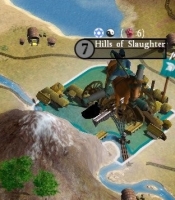 You are not guaranteed the nine-square territory when you first build a city
You are not guaranteed the nine-square territory when you first build a city
in Civilization IV. You may find a city that owns only its base tile,and is completely engulfed in another Civilization’s borders. To the right is an
example of this…- Cities do require a maintenance amount, and with
each city that will increase (therefore one can’t just start building Settlers and Cities right away like crazy). Eventhough this is asignificant change,
the
ability to build very large empires is still there. The difference is that it requires more strategy to do so. As citiesgrow, they
are able to sustain
themselves better without putting too much weight on the overall economy. Naturally, using diplomacy, religion, tradenetworks, and improvements
will
increase
income (and that will help fight increasing maintenance costs).- Cities on the outer-most fringe of your empire will still build
relatively quickly (as there is no corruption anymore). However their maintenance cost will be higher to
compensate for that. - The game is more balanced towards not having as many cities. You
will, however, still have a broad area. The focus is to have fewer but more specialized cities.
Also note that there is no city limit. You may build as many as you wish
however keep note of the previous comment in the last sentence. - The city
maintenance cost puts pressure on rapidly expanding
Civilizations, when rapid expansion might not be the best choice at the time. The AI will recognize this too, and they willnot keep throwingsettlers
towards your
boundaries.
- Cities on the outer-most fringe of your empire will still build
- Balancing out your priorities is the key. If you build cities too often, they will be very vulnerable.However, if you don’t build
cities and expand fast enough, you will be left in the dust. Prioritizing between expansion, research, building militaryunits, and
improving your core cities is really essential. Reading the landscape for resources, and good city positions is also veryimportant.
Building cities on hills or on rivers will help them survive longer, and make them less vulnerable. - Civic improvements/buildings are shown off on the terrain, as
well as wonders. Basically, everything that you build (other than units) is
shown on the terrain near the city.
- Instead of shields, youll see hammers. The more you have, the
- Right-Clicking on a city will bringup contextual menus, which will show the player options such as build orders, and governor settings.
Having said that, the city governor provides much more control over
automation.- Information in the city itself is much clearer as well, for the players who do wish to get a more detailedpicture. Each improvement
in the
city
has the specific benefits it offers to the city itself. Contentment and culture are also present in more detail. This meansthat the player will
no
longer have to keep looking through the Civilopedia for what certain buildings or aspects add to the game-play. - In order to simplify your building choice in cities, you are able to Shift-Click on a city in order to select whatyou want it to build,
this even without entering the main city interface. It will all be on the main interface. You will also be able to set
Build Queue orders so you
can
select which things you want to build in a particular order (so if you select the Archer then Temple and then the Pyramids
in this order,
production
will automatically switch each time a unit/building is done).
- Selecting multiple cities makes
management even easier. Jesse Smith states in this Developer Interview at GameSpot that the goal is to make everything as easy for the player as possible. This allows the player toset the same building
orders to a few cities at once. These features (the Build Queue and the city selection method) along with the flexibility
of options from the
City
Governor make managing cities extremely easy. There are six governor options
which will make it easy for you to customize what you want from that city.
Emphasize food, production, commerce, science, great people, and “Stop growth.”
These can be mixed, matched, etc, etc. - Setting common Rally Points to cities (or multiple
cities via the Shift-Click method) is also possible. This allows units that have just been built to go to that selectedspot automaticallywithout the
player’s input.
- When entering the city menu itself, you will see that older-style
text-based menus have all been replaced with graphical icons instead. The
uppermost part of the screen includes Scientific Research (center), Income and
current gold amount (left), and the date (right). Also in the upper part is the
current production (units, buildings, etc), growth rate, City name, as well as
the defensive bonus of the city (determined by improvements as well as culture),
health status (healthy to unhealthy citizens) as well as happiness (happy to
unhappy citizens, this also includes the reasons the citizens are happy or
unhappy). The top-left includes Scientific Rate,
Culture Rate (as well as the happiness it generates), and Tax Rate (these three
are determined as a percentage). We also can see a Maintenance Cost. On the left
side of the City Interface is a Trade Route Bonus display (these provide gold),
as well as what your current Buildings are. Also visible is the percentage of
your nationality and Culture rate per turn. The bottom part is the build queue
(Units, Improvements, or Wonders — all represented as icons), the lower-right
part are the City Governor options as well as the Mini-Map. The Right Side of the screen we can see the current city
religion; Luxury, Strategic, and Food resources; the city specialists are also
on the right side, as well as the Great People accumulation points. The middle,
of course, is the City Display. The Circled tiles represent worked tiles by your
citizens Since a
picture can speak a thousand words, here is a perfect example of the city
screen. - Just moving the mouse over the city willproduce results such as how fast the city is growing, building status, resources collected, as well as culture and Great
People
information.
- Information in the city itself is much clearer as well, for the players who do wish to get a more detailedpicture. Each improvement
- No longer will you be able to transfer production from one project
to another. This exploit has remained for a long time, and it has been addressed.- An example of the above bullet point is that when you lose a wonder to
another Civilization by a few turns, you will also lose all the production made on it, therefore you will no longer be ableto transfer it toanother project
however you will be
refunded a certain amount of gold. This rule is for units and other buildings as well. For example, if you switchproduction from a Settler to an
Archer, the
production will
not shift to the Archer, however it will be saved for the Settler when you come back to it, and you will pick up from whereyou left
off.
- If someone beats you to a World Wonder, you will get a refund, mot likely in the hundreds of gold, depending on howmuch time you’ve spent
on that wonder.
This has been mentioned just above.This (the fact that you can no longer simply transfer production) makes it much harder for you to “monopolize” the Great
Wonders. This is even
more evident
on the harder levels.
- An example of the above bullet point is that when you lose a wonder to
- Cities will no longer riot, but unhappy workers will not work. Until you address the problem, it will remainso.
- City names can also be changed by the player, as in Civ3.
- The bigger your city gets, the unhealthier it becomes. And
that can take a toll on the population, as the city will eventually begin to starve
(unhealthy citizens are not able to do as much work). You can combat this by building certain types of buildings, suchasaqueducts and
hospitals. However improvements such as Factories tend to decrease the city’s health status.
Building Options
Strategy comes to play even more here… there are a total of 102 buildings, and each has its own benefits. It is up
to you to be the
builder
- There are a total of 102 buildings in Civilization IV,
as mentioned above. - Each religion has its own improvements and mini-wonders associated with it.
These benefits of the wonders will still exist in cities that have switched
away from that religion. - The known buildings are below… note that this section has
building costs which were played at the “Normal” game speed:Building Requirements Cost (Hammers) Effect Academy none none +4 culture; +50% science Airport Flight 250 hammers +1 unhealthiness; May airlift one land unit per turn; +1
trade routesAqueduct Mathematics, Masonry 100 hammers +2 health; Required for the Hanging Gardens; Free if
starting the game on Industrial or later eraBank Banking 200 hammers +50% commerce; Required to build Wall Street; Available
for free on Modern and later erasBarracks none 60 hammers New land units receive +4 experience points; Required to build the
Heroic EpicBomb Shelters Electricity; The ManhattanProject 100 hammers -75% damage from ICBM Broadcast Tower Mass Media 175 hammers +50% culture; +1 happiness per 10% culture rate; can
turn 2 citizens into Artist; +1 happiness from Hit Musicals, Hit
Singles, Hit MoviesBunker Electricity 100 hammers -75% damage from Air Units Castle Engineering; Walls 100 hammers +1 culture; 50% defense (except Gunpowder Units);
Doubled production speed with StoneCoal Plant Assembly Line; Factory 150 hammers Provides power with Coal; +2 unhealthiness Colloseum Construction 120 hammers +1 happiness per 20% culture rate Courthouse Code of Laws 120 hammers -50% maintenances; Required for Forbidden Palace Drydock Steel 120 hammers +1 unhealthiness; New water units receive +4 experience
points; May build water units 50% fasterFactory Assembly Line 250 hammers +25% hammers; +50% hammers with Power; May turn 2
citizens into Engineer; Required to build Coal Plant, HydroPlant,
Nuclear PlantForge Metal Casting 120 hammers +1 unhealthiness; +25% hammers; May turn 1 citizen into
Engineer; +1 happiness from Gems, Gold, Silver;Required to build
Ironworks, The Colossus, The Eiffel Tower, The Statue of Liberty;
Available for free on Modern and later startsGranary Pottery 60 hammers Stores 50% of food after growth; +1 health from Corn,
Rice, Wheat; Available for free on Renaissance and later startsGrocer Guilds, Currency 150 hammers +25% commerce; May turn 2 citizens into Merchant; +1
health from Banana, Spices, Sugar, Wine; Required tobuild Supermarket;
Available for free on Industrial and later startsHarbor Compass 80 hammers +50% trade route yield; +1 health from Clam, Crab, Fish;
Available for free on Modern and later startsHospital Medicine 200 hammers +3 health; Heals units an extra 10% damage per turn;
Required to build the Red CrossHydro Plant Plastics 200 hammers Provides Power; Requires Factory Jail Constitution 120 hammers -25% War Weariness; Available for free on Modern and
later startsLaboratory Computers;
Observatory250 hammers +1 unhealthiness; +25% science; +50% Space
Ship Production; May turn 1 citizen into ScientistLibrary Writing 90 hammers +2 culture; +25% science; Required to build University,
National Epic, The Great LibraryLighthouse Sailing 60 hammers +1 food on water tiles; Required to build The Great
Lighthouse; Available for free on Industrial and later startsMarket Currency 150 hammers +25% commerce; May turn 2 citizens into Merchant; +1
happiness from Fur, Ivory, Silk, Whale; Available forfree on Industrial
and later startsNuclear Plant Fission; Factory 250 hammers Small chance of Nuclear Meltdown!!! Provides power with
UraniumObelisk Mysticism 30 hammers +1 culture; Obsolete with Calendar Observatory Astronomy 150 hammers +25% science; May turn 1 citizen into Scientist;
Required to build LaboratoryRecycling Center Ecology 300 hammers No unhealthiness from buildings which produce
unhealthinessSupermarket Refrigeration; Grocer 150 hammers +1 health from Cow, Deer, Pig, Sheep Theatre Drama 50 hammers +3 culture; May turn 2 citizens into Artist;
+1 happiness from Dye; Required to build Globe TheatreUniversity Education; Library 200 hammers +3 culture; Required to build Oxford
UniversityWalls Masonry 50 hammers +50% defense (except vs. Gunpowder Units);
Required to build Castle; Double production speed with StoneReligious Buildings
Buddhist Monastery Meditation; Buddhism 60 hammers +2 culture; +10% science; Required for
Buddhist Missionary; Obsolete with ScientificMethodBuddhist Stupa Music; Buddhism 300 hammers +50% culture; +2 happiness if Buddhism is
state religion; Can turn 2 citizens into Priest; +1 happiness from
Incense; Doubled production speed with CopperBuddhist Temple Priesthood; Buddhism 80 hammers +1 culture; +1 happiness; Can turn 1 citizen
into PriestChristian Cathedral Music; Christianity 300 hammers +50% culture; +2 happiness if Christianity
is state religion; Can turn 2 citizens into Priest; +1 happiness from
Incense; Doubled production speed with StoneChristian Monastery Meditation; Christianity 60 hammers +10% science; Required for Christian
Missionary; Obsolete with Scientific MethodChristian Temple Priesthood; Christianity 80 hammers +1 culture; +1 happiness; Can turn 1 citizen
into PriestConfucian Academy Music; Confucianism 300 hammers +50% culture; +2 happiness if Confucianism
is state religion; Can turn 2 citizens into Priest; +1 happiness from
Incense; Doubled production speed with CopperConfucian Monastery Meditation; Confucianism 60 hammers +10% science; Required for Confucian
Missionary; Obsolete with Scientific MethodConfucian Temple Priesthood; Confucianism 80 hammers +1 culture; +1 happiness; Can turn 1 citizen
into PriestHindu Mandir Music; Hinduism 300 hammers +50% culture; +2 happiness if Hinduism is
state religion; Can turn 2 citizens into Priest; +1 happiness from
Incense; Doubled production speed with MarbleHindu Monastery Meditation; Hinduism 60 hammers +10% science; Required for Confucian
Missionary; Obsolete with Scientific MethodHindu Temple Priesthood; Hinduism 80 hammers +1 culture; +1 happiness; Can turn 1 citizen
into PriestIslamic Monastery Meditation; Islam 60 hammers +10% science; Required for Islamic
Missionary; Obsolete with Scientific MethodIslamic Mosque Music; Islam 300 hammers +50% culture; +2 happiness if Islam is state
religion; Can turn 2 citizens into Priest; +1 happiness from Incense;
Doubled production speed with MarbleIslamic Temple Priesthood; Islam 80 hammers +1 culture; +1 happiness; Can turn 1 citizen
into PriestJewish Monastery Meditation; Judaism 60 hammers +10% science; Required for Jewish
Missionary; Obsolete with Scientific MethodJewish Synagogue Music; Judaism 300 hammers +50% culture; +2 happiness if Judaism is
state religion; Can turn 2 citizens into Priest; +1 happiness from
Incense; Doubled production speed with StoneJewish Temple Priesthood; Judaism 80 hammers +1 culture; +1 happiness; Can turn 1 citizen
into PriestTaoist Monastery Meditation; Taoism 60 hammers +10% science; Required for Taoist
Missionary; Obsolete with Scientific MethodTaoist Pagoda Music; Taoism 300 hammers +50% culture; +2 happiness if Taoism is
state religion; Can turn 2 citizens into Priest; +1 happiness from
Incense; Doubled production speed with CopperTaoist Temple Priesthood; Taoism 80 hammers +1 culture; +1 happiness; Can turn 1 citizen
into Priest
Wonders of the World
Even greater buildings, however, are the ones which build up your civilization as a culture, and put it along other
major powers: The
Wonders of
the World
- In total, there are about 28 Great Wonders (Great Wonders may
be built by only one Civilization), and about 12 Small Wonders (every Civilizationis allowed to build these, and they are more city-specific. For example, a
benefit of +100% science.- On top of that, what makes Wonders so exciting is the fact that Wonder Movies are back! Each time you build awonder, you will be viewing
a
short clip of it. There are around 45 movies in all.
- On top of that, what makes Wonders so exciting is the fact that Wonder Movies are back! Each time you build awonder, you will be viewing
- Below are all the known wonders and their Characteristics:
Wonder Requires Cost Benefits Small/National Wonders Forbidden Palace At least 8 cities; 6 Courthouses 200 hammers +4 culture; +1 Great People points; Reduces maintenance
for nearby cities; City more likely to generate Great MerchantGlobe Theatre Drama; 6 Theatres 300 hammers +6 culture; No unhappiness in city; May turn 3 citizens
into Artist; City more likely to generate Great ArtistHermitage Nationalism 300 hammers +100% culture; +1 Great People points; More likely for
city to generate Great Artist; Doubled production speed if Marbleis
availableHeroic Epic Literature; Barracks; Unit of level4 experience 200 hammers +4 culture; +1 Great People points; +100% military unit
production; More likely to generate Great Artist; May only be built in
Renaissance and earlier starts; Double production speed with MarbleIronworks Steel; 6 Forges 700 hammers +2 unhealthiness; +1 Great People points; +50% hammers
with Coal; +50% hammers with Iron; May turn 3 citizens into Engineer;
More likely to generate Great EngineerMt. Rushmore Fascism 500 hammers +4 culture; +1 Great People points; -25% War Weariness
in all cities; More likely to generate Great Artist; Double production
speed with StoneNational Epic Literature; Library 250 hammers +4 culture; +1 Great People points; +100% Great People
birth rate; More likely to generate Great Artist; May be built only in
Renaissance and earlier starts; Double production speed with MarbleOxford University Education; 6 Universities 400 hammers +4 culture; +1 Great People points; +100% science; May
turn 3 citizens into Scientist; More likely to generate Great Scientist;
Double production speed with StonePalace At least 4 cities [in order to be switched out of
original capitol city]160 hammers +2 culture; +1 happiness; Marks the Capitol city of a
CivilizationRed Cross Medicine; 6 Hospitals 600 hammers +2 culture; +1 Great People points; Free Medic I
promotion to units built in the city; More likely to generate Great
ScientistScotland Yard Communism 500 hammers +1 Great People points; Required to build/train a Spy;
More likely for city to generate Great ScientistWall Street Corporation; 6 Banks 600 hammers +1 Great People Points; +100% commerce; May turn 3
citizens into Merchant; City more likely to generate Great MerchantWest Point Military Tradition; Unit of level 5 experience 800 hammers +1 Great People points; New units receive +4 experience
points; More likely to generate Great Engineer; Doubled production speed
with StoneGreat Wonders Angkor Wat Philosophy 500 hammers +8 culture; +2 Great People points; +1 hammer from
Priest in all cities; May turn 3 citizens into Priest; More likely to
generate Great Prophet; May be built only in Medieval and earlier
starts; Doubled production speed with Stone; Obsolete with ComputersBroadway Electricity 800 hammers +2 Great People points; +50% culture; Provides 5 Hit
Musicals; More likely to generate Great ArtistChichen Itza Code of Laws 500 hammers +6 culture; +2 Great People points; +25% defense in all
cities; More likely to generate Great Prophet; May be built only in
Medieval an earlier starts; Double production speed with Stone;
Obsolete with RiflingHollywood Mass Media 1000 hammers +2 Great People points; +50% culture; Provides 5 Hit
Movies, +1 happiness; More likely to generate Great ArtistNotre Dame Music 650 hammers +10 culture; +1 happiness in all cities on the same
continent; More likely to generate Great Artist; May only be built in
Medieval and earlier starts; Double production with StoneRock & Roll Radio 800 hammers +2 Great People points; +50% culture; Provides 5 Hit
Singles, +1 happiness; More likely to generate Great ArtistStonehenge Mysticism 120 hammers +8 culture; +2 Great People points; Free Obelisk in
every city; Centers World Map; More likely to generate Great Prophet;
May be built only in Classical and earlier starts; Double production
speed with Stone; Obsolete with CalendarThe Colossus Metal Casting; Forge 250 hammers +6 culture; +2 Great People points; All city water tiles
receive +1 commerce; More likely to generate Great Merchant; May be
built only in Classical and earlier starts; Doubled production speed
with Copper; Obsolete with AstronomyThe Eiffel Tower Radio; Forge 1250 hammers +6 culture; +2 Great People points; Free Broadcast Tower
in every city; More likely to generate Great Merchant; Doubled
production speed with IronThe Great Library Literature; Library 350 hammers +8 culture; +2 Great People points; +2 free Scientists;
More likely to generate Great Scientist; May be built only in Classical
or earlier starts; Double production speed with Marble; Obsolete with
Scientific MethodThe Great Lighthouse Masonry; Lighthouse 200 hammers +6 culture; +2 Great People points; +2 trade routes for
all costal cities; More likely to generate Great Merchant; May be built
only in Classical and earlier starts; Obsolete with CorporationThe Hagia Sophia Engineering 550 hammers +8 culture; +2 Great People points; Workers build
improvements +50% faster; More likely to generate Great Engineer; May be
built only in Medieval and earlier starts; Double production speed with
Marble; Obsolete with Steam PowerThe Hanging Gardens Mathematics; Aqueduct 300 hammers +6 culture; +2 Great People points; +1 health in all
cities; +1 population in all cities; More likely to generate Great
Engineer; May be built in Classical and earlier starts; Double
production speed with StoneThe Kremlin Communism 1000 hammers +2 Great People points; -50% hurry production cost; More
likely to generate Great Artist; Double production speed with Stone;Obsolete with Fiber OpticsThe Oracle Priesthood 150 hammers +8 culture; +2 Great people points; 1 free technology;
More likely to generate Great Prophet; May be built in Classical and
earlier starts; Double production speed with MarbleThe Parthenon Polytheism 400 hammers +10 culture; +2 Great People points; +50% Great People
birth rate in all cities; More likely to generate Great Artist; May be
built in Classical and earlier starts; Doubled production speed with
Marble; Obsolete with ChemistryThe Pentagon Assembly Line 1250 hammers +2 Great People points; New units receive +2 experience
points in all cities; City more likely to generate Great EngineerThe Pyramids Masonry 450 hammers +6 culture; +2 Great People points; Enables all
Government Civics; More likely to generate Great Engineer; May be built
only in Classical and earlier starts; Double production speed with StoneThe Sistine Chapel Theology 600 hammers +10 culture; +2 Great People points; +2 culture per
specialists in all cities; More likely to generate Great Artist; May be
built only in Medieval and earlier starts; Double production speed with
MarbleThe Space Elevator Robotics; Space Race Victory must be enabled 2000 hammers +2 Great People points; +50% Spaceship production in all
cities; More likely to generate Great Scientist; Can build at a maximum
latitude of 30 degrees; Double production speed with AluminumThe Spiral Minaret Divine Right 550 hammers +8 culture; +2 Great People points; +1 gold from all
State Religion buildings; More likely for city to generate a Great
Prophet; May be built in Medieval and earlier starts; Double production
speed with Stone; Obsolete with Computers
The Statue of LibertyDemocracy; Forge 1500 hammers +6 culture; +2 Great People points; +1 free specialist
on all cities on the continent; More likely to generate Great Merchant;
May be built in Renaissance and earlier starts; Double production speed
with CopperThe Taj Mahal Nationalism 700 hammers +10 culture; +2 Great People points; Starts a Golden
Age; More likely to produce a Great Artist; May be built in Renaissance
and earlier starts; Double production speed with MarbleThe Three Gorges Dam Plastics 1750 hammers +2 Great People Points; Provides Power to all cities on
the continent; More likely to produce Great EngineerThe United Nations Mass Media; at least 3
teams/Civilizations; Diplomatic victory must be enabled1000 hammers +2 Great People points; Triggers Global Elections;
Guarantees eligibility for Diplomatic Votes; More likely to produce
Great MerchantVersailles Divine Right 800 hammers +10 culture; +2 Great People points; Reduces maintenance
in nearby cities; More likely to produce Great Merchant; May only be
built in Industrial and earlier starts; Doubled production speed with
MarbleProjects (Cannot be Rushed) Apollo Program Rocketry; Space Race victory must be enabled 1600 hammers Required to create SS Casting, SS Thrusters, SS Engine,
SS Docking Bay, SS Cockpit, SS Life Support, SS Stasis Chamber; Doubled
production speed with Aluminum-SDI Satellites 750 hammers +75% chance of intercepting ICBMs; Doubled production
speed with Aluminum-SS Casting Rocketry; Space Race victory must be enabled 600 hammers 5 Required for Space Race Victory; Doubled
production speed with Aluminum-SS Cockpit Fiber Optics; Space Race victory must be
enabled1000 hammers 1 Required for Space Race Victory; Doubled
production speed with Copper-SS Docking Bay Robotics; Space Race victory must be enabled 1600 hammers 1 Required for Space Race Victory; Doubled
production speed with Aluminum-SS Engine Fusion; Space Race victory must be enabled 1200 hammers 1 Required for Space Race Victory -SS Life Support Ecology; Space Race victory must be enabled 800 hammers 1 Required for Space Race Victory; Doubled
production speed with Copper-SS Stasis Chamber Genetics; Space Race victory must be enabled 1200 hammers 1 Required for Space Race Victory; Doubled
production speed with Aluminum-SS Thrusters Satellites 1000 hammers 3 Required for Space Race Victory; The Internet Fiber Optics 2000 hammers Grants all technologies known by 2 other
Civilizations; Doubled production speed with CopperThe Manhattan Project Fission 1500 hammers Enables building of ICBMs for all
Civilizations; Enables building of Bomb Shelters for all Civilizations;
Double production speed with UraniumReligious Wonders The Church of the Nativity Christian Holy City – +4 culture; +1 Great People points; +1 gold
per city with Christianity; Spreads Christianity; May turn 3 citizens
into Priest; More likely to generate Great ProphetThe Dai Miao Taoist Holy City – +4 culture; +1 Great People points; +1 gold
per city with Taoism; Spreads Taoism; May turn 3 citizens into Priest;
More likely to generate Great ProphetThe Kashi Wishwanath Hindu Holy City – +4 culture; +1 Great People points; +1 gold
per city with Hinduism; Spreads Hinduism; May turn 3 citizens into
Priest; More likely to generate Great ProphetThe Kong Miao Confucian Holy City – +4 culture; +1 Great People points; +1 gold
per city with Confucianism; Spreads Confucianism; May turn 3 citizens
into Priest; More likely to generate Great ProphetThe Mahabodhi Buddhist Holy City – +4 culture; +1 Great People points; +1 gold
per city with Buddhism; Spreads Buddhism; May turn 3 citizens into
Priest; More likely to generate Great ProphetThe Masjid Al-Haram Islamic Holy City – +4 culture; +1 Great People points; +1 gold
per city with Islam; Spreads Islam; May turn 3 citizens into Priest;
More likely to generate Great ProphetThe Temple of Solomon Jewish Holy City – +4 culture; +1 Great People points; +1 gold
per city with Judaism; Spreads Judaism; May turn 3 citizens into Priest;
More likely to generate Great Prophet
Your Advances
It is not the technology that matters It is how well you use it.
- The Technology Tree, just like its technologies, is smart and flexible. You will have the ability to researchdifferent things, but
they will
lead to the same level of technologies. It will offer unique paths to guide your empire along. There are no longer static
eras, as in
Civilization IIIscase, that is, the tech tree is not split into eras at all (although, as
previously said, you can start in different eras). To put it simply, eras do
not restrict your Technology choices and progress.- Like buildings, the player is able to switch
from one technology to another, however that research will not get accumulated for the new technology you are switching to
(in “Beakers,” the accumulation of technology. It is similar to “Hammers” when
talking about production). And when you switch to the technology
you were originally researching, you will get back where you left off. However this “banking” of resources or research islimited in terms thatyou will
eventually
start to lose production or research slowly over time. This change (production not carrying over to new buildings ortechnologies) has not been a
large
balance issue
because both the AI and Human Players are “on a level playing field” (to quote Barry). - There are different ways to discover technologies, like the already
mentioned Great People and Goody Huts. - You will also be allowed to skip whole branches of the Tech-Tree if you wish.
- The direction of your research will have an impact on the kind of Great People that are born. The player is free tochoose any path
whether it
be all-military,
all cultural, all-science, balanced, etc. You also dont need all the techs that connect to the one you want. Aconnection to it is all that
is
needed.
- Like buildings, the player is able to switch
- Even with evenly spaced-out resources it can
happen that in the early game a player may not always have a resource such as iron or horses. The tech-tree also balancesthat out should ithappen. It makes
it
easy for the player to switch strategies and head in the direction of Gunpowder (for example). - There is no longer a minimum amount of turns in
which you can discover a technology (in Civ3 it was four turns minimum). This makes it easier to come back and getolder technologies youhave not yet
researched. - There are 125 paths to Civ4‘s
Future Technology. This information has been gathered from grumbler’s post here in the forums.
Check it out for more information. - Below are all 86 technologies in the game. This technology tree
has been put together by CivFanatics’ Administrator, Thunderfall (taken from
several separate screenshots). Below it are details of what each technology
has to offer:Technology Requires… Leads To… Enables… Ancient Era Agriculture Animal Husbandry & Pottery May order Workers to build a Farm Alphabet Writing Drama & Literature Can trade technologies, Can turn production into research Animal Husbandry Agriculture or Hunting Horseback Riding & Writing Can build a Pasture Archery Hunting May train Archer Bronze Working Mining Iron Working & Metal Casting Enables Slavery; May
train Spearmen; Reveals the Copper Resource; Workers can remove forestCompass Iron Working Optics May train Explorer, Construct docks Fishing Sailing & Pottery Work Boat, Fishing Boats Horseback Riding Animal Husbandry May train Horse Archer Hunting Animal Husbandry & Archery Can build a Camp; May
build a Scout, SpearmanIron Working Bronze Working Compass May train Swordsmen; Reveals the Iron
ResourceMasonry Mining or Mysticism May build Walls & the Pyramids; The Great Lighthouse; Quarry Mathematics Writing Calendar, Construction, Currency May build the Aqueduct, & HangingGardens, Mayconstruct Quarry Meditation Mysticism Priesthood & Philosophy First to discover founds Buddhism;
May build a MonasteryMetal Casting Bronze Working Machinery May build the Colossus
Great Wonder, Forge; Workers may build a WorkshopMining Bronze Working & Masonry Can build Mine Monarchy Monotheism or Priesthood Feudalism, & Divine Right Enables Hereditary Rule
CivicMonotheism Polytheism Monarchy & Theology First to discover it founds Judaism; Enables Organized ReligionCivic Mysticism Masonry, Meditation, & Polytheism May build Obelisk &
StonehengePolytheism Mysticism Priesthood & Monotheism May build Parthenon; Founds Hinduism Pottery Agriculture or Fishing; Requires The Wheel Writing, & Metal Casting May build Granary, Plantation Priesthood Polytheism or Meditation Code of Laws, Monarchy, & Writing May build Oracle;
May build a TempleSailing Fishing Compass, & Calendar May build Galley; May
build LighthouseThe Wheel Pottery May build Chariots; May order Workers to
build RoadsWriting Animal Husbandry, or Pottery, or Priesthood Alphabet & Mathematics, Code of Laws, Feudalism, Theology May build a Library Medieval Era Banking Guilds Currency, & Economics May build a Bank; Enables Mercantilism Civic Calendar Mathematics Astronomy Makes Stonehenge &
Obelisk obsoleteCivil Service Code of Laws or Feudalism Nationalism, & Paper Can build Maceman; enables Bureaucracy civic Code of Laws Currency or Priesthood Constitution, Civil Service & Philosophy May build the Courthouse; ChichenItza;
enables Caste System Civic; First to discover it founds ConfucianismConstruction Masonry, Mathematics Engineering Enables building of Catapult, WarElephant; Colloseum Currency Mathematics Banking, & Code of Laws May build a Market, can turn production into gold Divine Right Monarchy, & Theology Nationalism May build Versailles, Spiral Minaret
& First to discover it founds IslamDrama Alphabet Music & Philosophy Theatre Education Paper Liberalism, Economics, & Gunpowder University, Great Library Engineering Construction, & Machinery Chemistry May build Halberdier,
Castle; Workers may build a FortressFeudalism Monarchy, & Writing Civil Service, & Guilds May build Longbowman;
Enables the Serfdom and Vassalage CivicsGuilds Feudalism, & Machinery Banking & Gunpowder Knights; Grocer; Improved Workshop Production Liberalism Education, & Philosophy Communism Enables Free Speech and Free Religion Civics Literature Alphabet, & Polytheism Music Can Build Hermitage, National Epic small wonders Machinery Metal Casting Engineering, Guilds & Optics, Printing Press Enables Crossbowmen, Enables Watermills and Windmills Military Tradition Nationalism Enables Defense Pact; May build Cavalry Music Literature, & Mathematics Military Tradition Notre Dame, first to Discover gets Great Artist Nationalism Code of Laws, & Divine Right, or Philosophy Military Tradition & Constitution, Fascism the Taj Mahal; Versailles; Nationhood Civic enabled Optics Compass, & Machinery Astronomy, & Medicine May build a Galleon Paper Civil Service or Theology Education & Printing Press Enables Map Trading Philosophy Code of Laws or Drama, Meditation Liberalism, & Nationalism Angkor Wat, Enables Pacifism Civic,
First to discover it founds TaoismPrinting Press Machinery, & Paper Democracy, & Replaceable Parts, Scientific Method Theology Monotheism, & Writing Paper Sistine Chapel; Founds Christianity; Theocracy Industrial Era Artillery Physics, Rifling, Steel Rocketry Can Build Artillery Assembly Line Corporation, Steam Power Fascism & Industrialization Can train Infantry, build Factory, Coal
Power plant, PentagonAstronomy Calendar, Optics Physics, & Scientific Method Observatory, Opens up the seas for trade, ObsoletesColossus Biology Chemistry, Scientific Method Ecology, & Medicine, Refrigeration +1 food from farms, enables farms w/o irrigation Chemistry Engineering, Gunpowder Steel, Scientific Method, Biology, & Steam
PowerWorkshops gain +1 Hammer; May train
Grenadier & Frigate, Obsoletes ParthenonCommunism Liberalism, Scientific Method Enables the State Property Civic;
Can build Spy Unit; Can construct Scotland Yard & KremlinConstitution Code of Laws, Nationalism Corporation, Democracy Can construct a
Jail, Enables Representation CivicCorporation Constitution, Economics Assembly Line +1 Trade Routes per City; May Construct Wall
Street; Obsoletes Great LighthouseDemocracy Constitution, Printing Press Can build Statue of Liberty, Enables Universal
Suffrage and Emancipation CivicsEconomics Banking, Education Corporation First to discover gets Great Merchant, Enables Free Market Civic Gunpowder Education or Guilds Chemistry, & Rifling Can build Musketman Physics Astronomy, & Scientific Method Artillery, Electricity, & and Flight First to discover it receives a Great
Scientist; Reveals the Uranium ResourceRailroads Steam Power, & Steel Combustion Can build Machine Gun; Workers can build Railroad Replaceable Parts Printing Press & Banking Rifling & Steam Power May build a Lumbermill; Increases Windmill production &
Watermills receive +1 HammerRifling Gunpowder, & Replaceable Parts Artillery, & Rocketry Allows the construction of Riflemen, Obsoletes ChichenItza Scientific Method Astronomy or Chemistry, & Printing Press Communism, Physics, & Biology Obsoletes Oracle,
Angkor Wat, reveals OilSteam Power Chemistry, Replaceable Parts Assembly line, Railroads Reveals Coal Steel Chemistry, Iron Working Artillery, & Railroads Can train Cannon, Ironclad; can build Drydock, and IronWorks Modern Era Combustion Railroads Flight, & Plastics Can build Transport, Cruiser; Obsoletes Whales; Worker can build Oil Well Composites Plastics, Satellites Future Tech Can Build Modern Armor, Jet Fighter, Stealth Bomber Computers Radio Genetics & Robotics Can build Laboratory; Obsoletes Spiral Minaret,
Angkor WatEcology Biology, Fission, Plastics Recycling Center, Enables EnvironmentalismCivic Electricity Physics Fission, Industrialism, Refrigeration, & Radio Windmills gain +1 Gold, Watermills gain +2
Happiness; May Construct Bunker & BroadwayFascism Assembly Line, Nationalism Mt. Rushmore; Police State Fiber Optics Computers, Plastics, Satellites Fusion ;Obsoletes Great Library; Can build Internet and SDIDefense Fission Electricity Ecology, Fusion Enables Manhattan Project, can build nuclear
power plantFusion Fiber Optics, & Fission First to discover it gets a Great Engineer Flight Combustion and Physics Rocketry Aircraft Carrier, Fighter, Airport Future Technology Composites, & Genetics Happiness and Health Bonuses Genetics Computers, & Refrigeration Future Technology Industrialism Assembly Line, & Electricity Plastics Can build Marines, Armor, Destroyer; & Obsoletes Ivory; &reveals Aluminum Mass Media Radio Broadcast Tower; Hollywood &United Nations Medicine Biology, Optics Genetics Battlefield Medicine Plastics Combustion, Industrialism Composites, Fiber Optics, Robotics Three Gorges Damn, Hydro Plant, Offshore Platform Radio Electricity Computers, Mass Media Can build Submarine, Bomber, Eiffel Tower Refrigeration Electricity and Biology Genetics Can Build Supermarket Robotics Plastics, Computers Modern Artillery, Space Elevator, Assembly Plant Rocketry Artillery or Flight, & Rifling Satellites Can Build TOW Infantry, Helicopter, Missile. Can Build Apollo Program - Future Technology research gives you extra health and happiness, as described above. In Civ3 it is important to know that Future
Technology did not do much for the player, and it is nice that that has improved as well.
- Every time a Technology is researched, the grandfatherly voice of Leonard Nimoy (Mr. Spock himself!) kicks in withan appropriate quote
from history.
The Military Backbone: Units
There are many different types of units, and all have different abilities. On top of that, there are special
promotions as well. This makes
each
military unit unique.
-
- Civilization IV will ship with a total of 83 units (this
includes barbarian animal units, which the player cannot build in a regular
unedited [via the World Builder] game. This includes domestic units such as workers, military ones (of course)and special units such as Great People. - Units can be upgraded by using your gold, as
they become outdated. This is similar to the Civilization III way. - Unique combat animations are a priority,
so you won’t see the same old animation for different types of units.- Units will also give verbal confirmation when you select them
and give them orders, again, this will be a specific language to the
Civilization that is chosen. - When a unit is victorious, a short music clip plays confirming
the victory.
- Units will also give verbal confirmation when you select them
- There are
Medallions on top of flags units are carrying to indicate how many units are in that tile. If there are 15 units in asingle tile, there willbe 15
Medallions above the flag on that tile.
- Civilization IV will ship with a total of 83 units (this

- Picking units out of a stack is easy so the player won’t have to repeat the picking out of a unit manydifferent times
over.
- The longer a unit stays fortified, the more advantage it will have when defending against other units. Forexample, being fortified
for five
turns gives the unit its maximum defense bonus of 25%. The unit does not get an instant bonus the moment it is
Fortified.
- “First Strike” is a system which simulates the advantages of
ranged units such as archers. If a unit has this ability, it can make a
“First Strike” against another unit before the combat actually begins,
giving it an advantage. - Workers, when captured from another Civilization, build at the
same rate as your own workers. There is no “half-normal” effectiveness as
was the case with Civ3. - The game will also be using multi-unit graphics for individual units, they will also be carrying banners fortheir countrys flag
and for
easier
identification. The Multi-Units represent actual hit-points. If you do not like
to see multi units, you can turn this feature off so you see single-graphic
units only. Below is a table of all known facts about units:Unit Strength Movement
/ RangeHammers (Cost) Requires Other Abilities Archery Units Archer 3 strength 1 move 25 hammers Archery 1 first strike; +50% city defense; +25%
hills defense; Upgrades to Longbowman or CrossbowmanSkirmisher(Mali) 4 strength 1 move 25 hammers Archery 1-2 First Strikes; +50% city defense; +25%
hills defense; Upgrades to Longbowman orCrossbowman; Replaces ArcherLongbowman 6 strength 1 move 50 hammers Feudalism &
Archery1 First Strike
+25% city defense
+25% hills defense; Upgrades to RiflemanCrossbowman 6 strength 1 move 60 hammers Machinery &Archery; Iron 1 first strike
+50% vs. Melee Units; Upgrades to Rifleman or
GrenadierCho-Ko-Nu(China) 6 strength 1 move 60 hammers Machinery &Archery; Iron 2 first strikes
Causes collateral damage
+50% vs. Melee Units; Upgrades to Rifleman or
Grenadier; Replaces CrossbowmanArmored Units Tank 28 strength 2 moves 180 hammers Industrialism &
Rifling; OilDoesn’t receive defensive bonuses; Starts
with Blitz; Upgrades to Modern ArmorPanzer
(German)28 strength 2 moves 180 hammers Industrialism &
Rifling; OilDoesn’t receive defensive bonuses; +50% vs.
armored units; Starts with Blitz; Upgrades to Modern Armor; Replaces
TankModern Armor 40 strength 2 moves 240 hammers Composites & Computers;
Oil & Aluminum1 First Strike; Doesn’t receive defensive
bonuses; Starts with BlitzGunpowder Units Musketman 9 strength 1 move 80 hammers Gunpowder Upgrades to Rifleman Musketeer(French) 9 strength 2 moves 80 hammers Gunpowder Upgrades to Rifleman; Replaces Musketman Rifleman 14 strength 1 move 110 hammers Rifling +25% vs. mounted units; Upgrades to Infantry Redcoat
(English)16 strength 1 move 110 hammers Rifling +25% vs. mounted units; +25% vs. gunpowder
units; Upgrades to Infantry; Replaces RiflemanGrenadier 12 strength 1 move 100 hammers Chemistry +50% attack vs. Rifleman; Upgrades to
Infantry or Machine GunInfantry 20 strength 1 move 140 hammers Assembly Line & Rifling +25% vs. Gunpowder Units; Upgrades to SAM
Infantry or
Mechanized InfantrySAM Infantry 18 strength 1 move 150 hammers Rocketry Can intercept aircraft (40% chance); +50%
vs. helicopter unitsMarine 24 strength 1 move 160 hammers Industrialism & Rifling +50% attack vs. machine gun; +50% attack vs.
artillery; Starts with Amphibious promotionNavy SEAL(American) 24 strength 1 move 160 hammers Industrialism & Rifling 1 first strike; 1-2 First Strikes; +50%
attack vs. Machine Gun;
+50% vs. Artillery; Starts with Amphibious and March promotion; Replaces
MarineMechanized Infantry 32 strength 2 moves 200 hammers Robotics & Rifling Can intercept aircraft (20% chance); Starts
with March promotionHelicopter Units Gunship 24 strength 4 moves 160 hammers Rocketry &
Flight; OilCannot capture enemy cities; Doesn’t receive
defensive bonuses; Flies over terrain; Can withdraw from combat (25%
chance); +100% vs. Armored UnitsMelee Units Warrior 2 strength 1 move 15 hammers – +25% city defense; Upgrades to Axeman or
SpearmanQuechua
(Incan)2 strength 1 move 15 hammers – Doesn’t receive defensive bonuses; +25% City
Defense; +100% vs. archery units; Upgrades to Axeman or Maceman or
Spearman; Replaces WarriorSwordsman 5 strength 1 move 40 hammers Iron Working; Iron +10% City Attack; Upgrades to Maceman Jaguar(Aztec) 6 strength 1 move 35 hammers Iron Working +10% city attack; +25% jungle defense;
Upgrades to Maceman; Replaces SwordsmanPraetorian(Roman) 8 strength 1 move 45 hammers Iron Working; Iron Upgrades to Maceman; Replaces Swordsman Axeman 5 strength 1 move 35 hammers Bronze Working;
Copper or Iron+50% vs. Melee Units; Upgrades to Maceman Maceman 8 strength 1 move 70 hammers Civil Service &Machinery; Copper or
Iron+50% vs. Melee Units; Upgrades to Rifleman or
GrenadierSamurai
(Japanese)8 strength 1 move 70 hammers Civil Service &Machinery; Iron 2 First Strikes; +50% vs. melee units;
Upgrades to Rifleman or Grenadier; Replaces MacemanSpearman 4 strength 1 move 35 hammers Hunting; Copper or Iron +100% vs. mounted units; Upgrades to Pikeman Phalanx 5 strength 1 move 35 hammers Hunting; Copper or Iron Doesn’t receive defensive bonuses; +25% Hills
Defense; +100% vs. mounted units; Upgrades to Pikeman; Replaces SpearmanPikeman 6 strength 1 move 60 hammers Engineering; Iron +100% vs. mounted units; Upgrades to Rifleman
or GrenadierMounted Units Chariot 4 strength 2 moves 25 hammers The Wheel; Horse Doesn’t receive defensive bonuses; Can
withdraw from combat (20% chance); Upgrades to Horse Archer or KnightWar Chariot(Egyptian) 5 strength 2 moves 25 hammers The Wheel; Horse Immune to First Strikes; Doesn’t receive
defensive bonuses; Can withdraw from combat (20% chance); Upgrades to
Horse Archer or Knight; Replaces ChariotImmortal(Persian) 4 strength 2 moves 25 hammers The Wheel; Horse Can withdraw from combat (30% chance); +50%
vs. Archery Units; Upgrades to Horse Archer or Knight; Replaces ChariotHorse Archer 6 strength 2 moves 50 hammers Horseback Riding & Archery;
HorseImmune to first strike; Doesn’t receive
defensive bonuses; +50% vs. Catapult; Upgrades to KnightKeshik(Mongol) 6 strength 2 moves 50 hammers Horseback Riding & Archery;Horse 1 first strike; Doesn’t receive defensive
bonuses; Ignores terrain movement costs ; +50% attack vs. Catapult;
Upgrades to Knight; Replaces HorseKnight 10 strength 2 moves 90 hammers Guilds &
Horseback Riding;
Horse and
IronImmune to first strikes; Doesn’t receive
defensive bonuses; Upgrades to CavalryCamel Archer(Arabian) 10 strength 2 moves 90 hammers Guilds &
Horseback Riding &
ArcheryImmune to first strikes; Doesn’t receive
defensive bonuses; Can withdraw from combat (25% chance); Upgrades to
Cavalry; Replaces KnightConquistador(Spanish) 10 strength 2 moves 90 hammers Guilds &
Horseback Riding;
Horse &
Iron2 first strikes; Immune to first strikes;
+50% vs. Melee Units; Upgrades to Cavalry; Replaces KnightCavalry 15 strength 2 moves 120 hammers Military Tradition,Gunpowder &
Horseback Riding;
HorseDoesn’t receive defensive bonuses; Can
withdraw from combat (30% chance); +50% attack vs. cannon; Upgrades to
GunshipCossack
(Russian)18 strength 2 moves 120 hammers Military Tradition,Gunpowder &
Horseback Riding;
HorseDoesn’t receive defensive bonuses; Can
withdraw from combat (30% chance); +50% vs. Cannon; +50% vs. Mounted
Units; Upgrades to Gunship; Replaces CavalryWar Elephant 8 strength 1 move 60 hammers Construction;
IvoryDoesn’t receive defensive bonuses; +50% vs.
mounted units; Upgrades to CavalryNaval Units Galley 2 strength 2 moves 50 hammers Sailing Cargo Space: 2; Cannot enter ocean; Upgrades
to GalleonCaravel 3 strength 3 moves 60 hammers Optics Cargo Space: 1 (can carry Scout, Explorer,
Missionary, Spy, or Great People); Can explore rival territory w/o
triggering war; Upgrades to Frigate or SubmarineGalleon 4 strength 4 moves 80 hammers Astronomy Cargo Space: 3; Upgrades to Transport Frigate 8 strength 4 moves 90 hammers Chemistry &
Astronomy;
IronCan bombard city defenses (-10/turn);
Upgrades to DestroyerIronclad 12 strength 2 moves 100 hammers Steel &Steam Power;
Iron &
CoalCannot enter ocean; Can bombard city defenses
(-10%/turn); Upgrades to DestroyerTransport 16 strength 5 moves 125 hammers Combustion;
Oil or
UraniumCargo Space: 4 Destroyer 30 strength 8 moves 200 hammers Combustion;
Oil or
UraniumCan see submarines; Can intercept aircraft
(30% chance)
Can bombard city defenses (-15%/turn)Battleship 40 strength 6 moves 225 hammers Industrialism;Oil or Uranium Causes collateral damage; Can bombard city
defenses (-20%/turn)Submarine 24 strength 6 moves 150 hammers Radio &
Combustion;
Oil or
UraniumCargo Space: 1 (carries scout, explorer,
missionary, spy, great people); Invisible to most units; Can see
submarines; Can explore rival territory; Can withdraw from combat (50%
chance)Carrier 16 strength 5 moves 175 hammers Flight;
Oil or
UraniumCargo Space: 3 (carries fighters) Recon Units Scout 1 strength 2 moves 15 hammers Hunting Better results from tribal villages; Can only
defend
+100% vs. animals; Upgrades to ExplorerExplorer 4 strength 2 moves 40 hammers Compass Better results from tribal village
Can only defend; Ignores terrain movement cost
Starts with Guerilla I, Woodsman ISiege Weapons Catapult 5 strength 1 move 40 hammers Construction Doesn’t receive defensive bonuses; Can
withdraw from combat (25% chance); Causes collateral damage
Can bombard city defenses (-15%/turn); Upgrades to CannonCannon 12 strength 1 move 10 hammers Steel;
IronDoesn’t receive defensive bonuses; Can
withdraw from combat (25% chance); Causes collateral damage; Can bombard
city defenses (-20%/turn); Upgrades to ArtilleryMachine Gun 18 strength 1 move 125 hammers Railroads Can only defend; 1 first strike
+50% vs. Gunpowder Units; Upgrades to SAM InfantryArtillery 18 strength 1 move 150 hammers Artillery Doesn’t receive defensive bonuses; Can
withdraw from combat (25% chance); Causes collateral damage; +50% vs.
siege weapons; Can bombard city defenses (-25%/turn)Air Units Bomber 16 strength 1 move; 8 range 140 hammers Radio &Flight;
OilCauses collateral damage;
-50% vs. water units; Can destroy tile improvements and bomb city
defenses (-15%/turn); Upgrades to Stealth BomberFighter 12 strength 1 move; 6 range 100 hammers Flight;
OilCan intercept aircraft (50% chance); Can
destroy tile improvements and bomb city defenses (-5%/turn); Upgrades to
Jet FighterJet Fighter 24 strength 1 move; 10 range 150 hammers Composites &
Flight;
Oil or AluminumCan intercept aircraft (70% chance); Can
destroy tile improvements and bomb city defenses (-10%/turn)Stealth Bomber 20 strength 1 move; 12 range 200 hammers Composites,Flight &
Robotics;
Oil &
AluminumCan evade interception (50% chance); Causes
collateral damage; -50% vs. water unitsCan destroy tile improvements and bomb city defenses (-20% turn)Nukes ICBM 0 strength 1 move; global range 500 hammers Rocketry &
Fission;UraniumCan nuke enemy lands;
Requires The Manhattan ProjectSpies Spy 0 strength 2 moves 80 hammers Communism;
Scotland YardNational Unit (4 allowed at a time);
Invisible to all units; Can explore rival territory; Can expose rival
spies in nearby tiles; Starts with sentryDomestic Units Settler 0 strength 2 moves 100 hammers – Can found a new city Fast Worker(Indian) 0 strength 3 moves 60 hammers – Can improve tiles; Replaces Worker Worker 0 strength 2 moves 60 hammers – Can improve tiles Work Boat 0 strength 2 moves 30 hammers Fishing Cannot enter ocean;
Can create Fishing Boats, Whaling Boats, and Offshore PlatformReligious Units Buddhist Missionary 0 strength 2 moves 40 hammers Buddhism; Buddhist Monastery May have three of them on the map at a time;
May spread religion to your cities, or to foreign citiesChristian Missionary 0 strength 2 moves 40 hammers Christianity; ChristianMonastery May have three of them on the map at a time;
May spread religion to your cities, or to foreign citiesConfucian Missionary 0 strength 2 moves 40 hammers Confucianism; ConfucianMonastery May have three of them on the map at a time;
May spread religion to your cities, or to foreign citiesHindu Missionary 0 strength 2 moves 40 hammers Hinduism; Hindu Monastery May have three of them on the map at a time;
May spread religion to your cities, or to foreign citiesIslamic Missionary 0 strength 2 moves 40 hammers Islam; Islamic Monastery May have three of them on the map at a time;
May spread religion to your cities, or to foreign citiesJewish Missionary 0 strength 2 moves 40 hammers Judaism; Jewish Monastery May have three of them on the map at a time;
May spread religion to your cities, or to foreign citiesTaoist Missionary 0 strength 2 moves 40 hammers Taoism; Taoist Monastery May have three of them on the map at a time;
May spread religion to your cities, or to foreign citiesGreat People Since great people are in a class of their own, check
the Great People section for more information on their abilitiesAnimal Units Bear 3 strength 1 move – – Doesn’t receive defensive bonuses Lion 2 strength 1 move – – Doesn’t receive defensive bonuses Panther 2 strength 2 moves – – Doesn’t receive defensive bonuses Wolf 1 strength 1 move – – Doesn’t receive defensive bonuses - A nuclear explosion can cause severe damage to the tile targeted and the eight adjacent tiles. You are not able toattack your own
territory or cities with the ICBM. Everything goes through a “kill check” (buildings, units and terrain improvements).
Buildings are either
destroyed or come out unharmed if they pass. Units can be destroyed if the “kill check” fails or damaged or unharmed if
they pass. Wonders, roads
and railroads are not affected by a nuclear strike. In addition to these potential damages, radioactive fallout must be
cleared by workers when
the Ecology technology is researched. Otherwise the affected tiles are unworkable.
- Each time a nuke is used, the attitude of a Civ nuked goes down by 2 points (read more).Your relationship with
other Civilizations around the world will also be negatively affected.
- The UN Nuclear Non-Proliferation Treaty bans the construction and use of all nuclear weapons, but existing nukes donot disappear. If this
resolution passes before the Manhattan Project is complete, you will not even be able to finish that project and therefore
no nuclear weapons
will be built or used throughout that game.
- You can, of course, defend yourself from nukes by building the SDI Project which has a 75% chance of interceptingenemy nuclear weapons
throughout your territory. You may also build a Bomb Shelter in cities. This reduces damage from ICBMs by 75%. Without the
Bomb Shelter, the
City’s population can be reduced as much as 50% by a single ICBM.
A New Combat System
How will you wage war? What new systems are involved? This is the section for the warmonger.
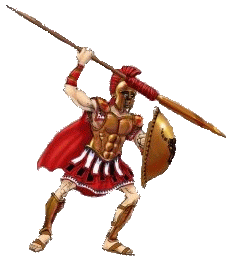 The battle system is something that has been ameliorated (it is like an RTS
The battle system is something that has been ameliorated (it is like an RTS
“rock-paper-scissors” concept). It has been made to actually encourage players to use the array of forces theyhave.
Players are able to group units, as an interface change. For example, you can group a Settler and
a
Spearman, and they will always be together (unless you
decide to re-group). Workers can be grouped together as well, and then their actions
within that group can be queued. This has been changed so you will favor most different units, and not stick to yourmost powerful, for instance.
- Using mixed attacks such as ground and aerial bombardments and not just on a single overwhelming stack of units(commonly known as the Stack of Doom) is highly encouraged. This brings more strategy to battles, and also makes them
more realistic.
- The fact that
Artillery can attack all units in a stack forces players to spread out their forces to avoid damaging more units
(artillery units can damage all units in a tile because of the collateral
damage feature they have). Note that Artillery units such as catapults attack
like normal units, although they can bombard cities and reduce their defenses. - The terrain also takes a large part in Combat. However, it can also be said that it is more simplified.
The only time you will get a defensive bonus is when over hills, forests, or
jungles.
- Using mixed attacks such as ground and aerial bombardments and not just on a single overwhelming stack of units(commonly known as the Stack of Doom) is highly encouraged. This brings more strategy to battles, and also makes them
- Great Artists may also have a military-related use to them. If you capture a city and it is rioting,dropping a Great Artist and
giving the
city a 1,000 point culture boost
should quickly suppress all rioting and change the mood of the citizens in the city. The only way you could
suppress rioting in Civ3 was to basically start building a lot of cultural buildings such as Temples andLibraries.
- Selecting any or all units in a given square has many shortcuts to
it. The game determines the best attacker when you give astack attack order or the best defender when your stack is attacked.- Stack attack works by stacking a bunch of units and giving them
the attack command. If you are using combined arms in that stack (a balance of defensive and offensive units), the gamewill automatically lookat who you
are attacking
and who their defenders are. - The amount of damage a unit does to another unit is now
out of a scale of 100, even though that’s more or less hidden from the user. The amount of damage a unit does is relativeto its differentstrengths. So now
when a
spearman attacks a tank, he may hit three times, but that’s only going to take off a quarter of the tank’s hit points.Meanwhile, a tank hitting
a spearman
only has to hit
him once or twice, and he’s gone entirely. - To further explain the combat system: Two units of
the same relative power will do about 20% damage per hit, so it would take five hits to kill a unit. When one unit is muchmore powerful (a tankfor
example), the
more powerful unit does a higher percentage of damage than the less powerful one (a Spearman for instance). In other words,if both manage to hit
three times
in a
battle, the Spearman would have done only around 40% damage, while the more tank would have already killed the spearman.However that is not all
to the
combat
system. Many more calculations are going on behind the scenes that make for fewer lucky strikes, which further balance thesystem.
- Stack attack works by stacking a bunch of units and giving them
- In the options screen, players can turn on an option
that will let them see bars over units so they can judge their chances of winning or losing before even entering thecombat. - In all, Civ4 will offer about 41 different promotions for
units (with 20 different promotion types. However some have more than one
level, as you will see below. Units may receive up to 20 promotions as well). This allows each unit to be extremelyflexible in itsabilities. So,
how do units get these promotions? Well, they might get them from a battle, depending on how difficult it has been. The
great thing about
promotions is
that they are not triggered by technology either. As they win, they will gather experience points.
You will make specialized units without changing any of their previous
specializations; you can also change their paths with certain
situations.- Auto Promoting units is also an option you have. However you can always promote them manually.
- The numbers and types of available bonuses
differ per unit type and only land and sea military units can acquire them (air units are different). - There are no XPs (experience points) from bombarding
fortifications or if the opposing unit withdraws. - Units can also gain experience from a Barracks
(land units), a Drydock (sea units) or a goody hut. - Some wonders, civic choices, and leader traits can
give units extra experience or even certain promotions. As you might expect, the first promotion comes rather quickly,while each subsequentpromotion
requires more
XP. Here are the different types of promotions and their abilities below:
- Some Units might also have an invisible characteristic. Great People
(and possibly spies) are an example of this. - Infantry will have defensive bonuses in difficult terrain, while cavalry will have an advantage attackingranged units such as
archers.
Artillery/Siege units are stronger and will allow for damaging all of the units in a stack. Bombardment units are now like
a hybrid of previous
games. The damage a unit has is relative to their strength. Again, these changes were done to encourage use of combined
arms.
- There are no longer separate attack or defense bonuses such as in Civ3. They will have only one basestrength that might or
might not
increase or decrease. Units also have advantages or disadvantages against certain units. Pikemen will have a decided
advantage over mounted units
and
Axmen are especially good against melee units.
- Units strength is represented by the number of units. At full strength, a unit will have three units, and when ittakes damage it loses a
single unit until it is destroyed.
- Units strength is represented by the number of units. At full strength, a unit will have three units, and when ittakes damage it loses a
- Armies have been eliminated (in Civ3 terms, now they will only serve as moving of units together), butmore customization
and
countering is available in return as describe above.
- Surrounding and isolating a foreign city with your forces is now
a new strategy. This puts pressure on the foreign leader and he mighteventually offer it to you via diplomacy. If he or she does not want to trade the city to you, the city itself has a goodchance to riot because
the
city’s population would want to join your Civilization.
- You can
blockade cities, for example, by moving your naval units close to an enemy city (that means that city can no longerwork its water tiles).Water
resources can also be harvested (this has been known for a long time). If you’re getting all your
Oil from the water, you are in trouble because another Civ can cut off your oil supply, unlessyou can do something about it and defend your weak points.
- The infamous “Spearman defeats Tank” phenomenon is now gone,
needless to say. This has caused a lot of headachesfor Civ fans in the past. This will mean that units that are inferior will not be able to win against more modernones.
- Early on the best city defense unit is no longer the Spearman, it is the Archer. Spearmen are more useful against other Cavalry units.
Warriors are the weakest unit, however they are perfect for escorting Settlers and/or workers through danger zones (filledwith wild
animals as well as Barbarians).
The Multiplayer
Some people, of course, like to play with others online. How the multiplayer mode seems so far is promising.
- This time, Civilization IV will have an integrated multiplayer so you won’t have to wait for expansionpacks like we did
with the
Civ3 series. A new co-op feature allows for more satisfying game-play than before when playing with other people,as you will form
alliances against
the AI, or other opponents. The map generator ensures that everyone starts equally as well, as the map is generated
randomly. Player in MP will
also be
able to form
permanent or temporary alliances with one or more players. Every game starts
out with the server host picking rules, players picking factions (and sides
if applicable) and then entering the game. - Youll be able to play a very quick online game with a friend orplay long, ruthless campaigns lasting months. In MP, you can start out early, and end up playing well into the modern age,
something which was
difficult to achieve with Civ3s MP. In MP, there are five speed
settings: Blazing, Fast, Normal, Slow, and Snail.- Even though, through PitBoss, playerscan play as long as they like, there is a mode which also lets players to play shorter games (100
turns, from the Stone Age to the Bronze Age for example).
- Even though, through PitBoss, playerscan play as long as they like, there is a mode which also lets players to play shorter games (100
- Right out of the box Civ4 supports up to 18
players online. This allows basically every Civilization to be played. - Players are able to compete in traditional turn-based or simultaneous move games either on a network or viathe Internet.
- If and when a player or players are disconnected from the game, a screen (labeled “Democracy”)
pops-up giving the other players still in the game to vote on what to do. The options are: Kick the player out of the gameand replace hisCivilization with
an AI player,
save the game and continue playing until the player can join back, or just wait for the player to re-connect and proceedwith the ongoing game.
Games are
generally
easy to save, even if the circumstances are not so bright. - Team Play: Players can form alliances with each other in multiplayer games. Allied nations will put theiraccomplishments together,
join forces
in combat and share all information, even line of sight, benefits of wonders, research (two players, for example, can
research one thing at the
same
time to discover it faster), unit trading, and sharing of territory. These additions deliver a plethora of new strategic
and tactical options to
the
players. Team-Play is available both in MP and SP (Single Player) modes.
- In Multiplayer, the server browser will include buddy list
functionality to keep track of friends easier. - Timers are set in Multiplayer in order to make everything
move smoothly (and so people can’t stand there doing nothing for a longer time). - Missionaries are very valuable in
Multiplayer. It’s even possible to force another civilization to adopt your religion, which can potentially bring in a tidysum of money for you.Citizens
can become very unhappy
should their way of life change so dramatically, however.
- In Multiplayer, the server browser will include buddy list
- Teams can easily communicate with each other. Example: You are able to put signs
on tiles and draw lines on the terrain and other players are able to see that and know where to go(if a specific location is your goal. This is available in Single-Player mode as
well). Players can even send little pings to alert teammates of important events happening around their map. Support forvoice over IP also allows players to talk while playing.
- You can go in and protect your ally’s cities unlike in Civ3.
- There is also a new “Double City Elimination”in Multiplayer which means that if you lose two cities, you lose the game. To go
into more detail, there are different modes of it. If you take one city it can
instantly burn to the ground, and therefore you are at an instant advantage.
You can also set it so the city does not get razed, and if your opponent takes
back that city, the score is leveled out. The “One City Challenge” option means that you can have only one city. Thereare
the “Always War” and “Always Peace” options as well. For a game, you can chose one or the other (you are, obviously, unable
to select both at the
same time).
These features can be mixed to create the MP game you want.
- A particularly hardcore game can be createdby playing with teams and handicaps. With two teams (one with one person, set the level to the easiest difficulty so that
player gets a bonus on
most all
areas of game-play) and one with several other people on a normal, or harder difficulty for a greater challenge.
- In addition to the standard internet, Hot Seat, and LAN modes, Civ4
is playable by email (PBEM), or on a persistent turn-basedserver, or PTBS (named PitBoss).- The Pit Boss
persistent turn-based server will allow for players to play as long as they like and leave when they like withoutdisrupting the game. Playerscan
also fill in for AI players and join when they like
(so it is possible to jump in right in the middle of a game and take an AI’s
role). The server will download the current game state, then a player takes their turn and the server
afterwards saves for the next player. It is like playing a streamlined version of play by e-mail or hot seatmultiplayer.
- The
Multiplayer pit boss, which will allow persistent multiplayer games of Civ4,
was released in December. - Firaxis will cull all sorts of statistics from multiplayer
matches, which will let it rank players, which is aimed to avoid some of the frustration when you find yourself in amultiplayer match withruthless Civ
pros.
- The Pit Boss
- Connectivity: From Jesse “Friedrich
Psitalon” Fletcher’s MP article
– GameSpy NAT negotiation allows people behind routers, firewalls, etc, to
play with no trouble at all – no opening or closing of ports, zones, etc. If
needed, Direct IP still exists, and WOULD require playing with ports, but the
only port you need to open is 2056, or whichever port you specify in your INI
file. No more OOS. Except if you are playing a different version of the game.
The game has even shown the ability to “resynch” itself if a genuine
problem arises temporarily (hotjoining players sometimes cause a 1 or 2 second
OOS). - Protected copies of all original files will guarantee that everyone in a game
is playing by the same rules (be it in a casual MP game, orin a
Tournament).
Customization Flexibility
People do not lie when they tell you some like to customize the game just as much, or even more so than to actually
play it. What’s new
here?
- Civilization IV will set a new standard for user-modification allowing gamers to create their ownadd-ons using Python and
XML. It
is the most customizable version of Civ to date! Basically, full mod support is offered here, and almost nothingin the game is
hard-coded
(unlike in Civilization III. Firaxis has also said that a fully customizable Government system
will also be
available,
among the many other things…Below are the four modding levels Firaxis games has released information on, ranging from the
easiest (the Map
Editor),
to the most difficult (the Software Developer’s Kit).
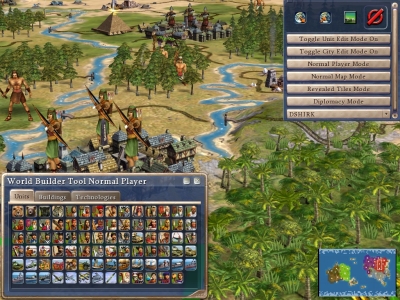 Map Editor: This will probably be like the Civ3 Map Editor. It is the easiest way to mod the game yourway, and yes, anyone
Map Editor: This will probably be like the Civ3 Map Editor. It is the easiest way to mod the game yourway, and yes, anyone
at all can
do it
with ease. Just open the editor and you’ll see the ability for you to tweak and change everything from Cities,
Technologies, Units, and
Diplomacy. For cities, you
are able to add a specific population number (as the screenshot to the left illustrates), culture points, gold amounts and
even change that
city’s religion.
Adding technologies to the ones you already have is also possible. For units, you are able to change the level and
promotion type of any
available unit as
well. Changing the terrain type is also another distinct possibility. Just like you are able to edit Technologies, Cities,
and Units for your own
Civilization, you are given the option to change these same aspects for the other available Civilizations in the game just
as easily. The World
Builder even
goes as far as letting you change diplomatic options and relations. The editor also opens the way for cheating. –
Quoted from CivFanatics’ Hands-On preview. The World Builder can be
launched at any time during a game so players can add new cities as well as creating new starting conditions. The created
maps are stored in a
text-based format, which can
be opened in a text editor. What this does is basically make it easy for you to edit without even starting the
game.
- The Flexible XML (eXtensible Markup Language) Files: All values of the data for the aspectsof the game such as
units, terrain, texts,
camera controls, graphics scales, mouse and keyboard mapping, links to
Python, audio scripts, and so forth are stored here. Gamespeed will also be Moddable through the XML files. A perfect example of this is that a player can make
some units get build
really
fast, while making other improvements get built at a slower rate. There are lots of tutorials on the Web for this, so you
may want to check out
this
sections notes and get prepared for it if you are enthusiastic about modding the game (as so many people are). Every art
asset has a scale value
is in
XML, and it can be modified
the way you like (these include buildings, trees, units, improvements, resources, etc).
You can also modify terrain-specific movement just by doing a change in the
XML file(s). An example is “Mountain Infantry”. Also, through XML, players can add new unit or buildingtypes, change the cost of
wonders, or add new civilizations. Players can also change the sounds played
at certain times or edit the play list for your soundtrack. NOTE: You can have custom soundtracks simply by adding music to
the custom folder.
You only need
to edit the XML in order to assign certain pieces to specific eras or remove certain pieces.
- Python: Moving up to a more difficult modding level for most players, Python is a very powerful scriptinglanguage that will allow
people
familiar with the scripting language to do things from changing and totally reorganizing the interface (as all of the
interface is written in
Python)
to changing more algorithmic parts of the game like map generation, combat, triggers/events
(there are, by the way, around 30 triggers including new unit, building, end
turn, unit move, etc), and even the AI.
A Python interpreter is also added to the game which makes it possible for
the player to open it during a game and generate code “on the fly” or check
other variables. Players will now have the ability to add scripted events to the game like automaticallygenerating units when a tile is reached, having specific situations trigger automatic war, or get this, bringing back Civil
Wars caused by
unrest, Civ II
style!
- AI Software Developers Kit (or SDK): For even more advanced modders, Firaxis is offering the entire AI andGame Code of the game.
Here,
players
can change literally everything about the game they want. They can even create and write their own game types to pretty
much building their own
game,
loosely based on Civilization. Literally everything can be changed
(including the camera position). It has been said that it is very, vary rare for such an amazing moddinglevel to be released for a strategy game. The AI SDK will be available shortly after the game ships,
in early 2006. Modders can do anything short of changing the basic graphics engine, the core Civ engine, orthe network code.
- Some new modding tools are the: Unit Formation
Editor (this gives control of where units stand on a tile, how many units are in
a formation, and under what situations a certain formation is used), Hot-Swapping of Assets (meaning that the computerdetects any changes
and can load them “on the fly”), Python Scripting for the World Builder,
Python Interpreter Console, Python Editable UI, L-System (Lindenmayer System) City Building
(which makes the city graphics look random with each build, but it is also
used to generate terrain features such as trees),
Colored Map Overlays… The GameCore DLL is a “Pluggable Module,” which
will make no assumptions about the underlying platform and hardware,
[and more]. - The new Bitmap Converter lets you import BMP files and turn those into
Civ maps, letting you download a topographical map (or a picture of your
favorite celebrity) and have the game extract sea levels, mountain ranges and
other information straight from it. Giving the Bitmap Converter any BMP image
and it will make a Civilization IV map from it. Everything blue becomes water, everything green becomes grass – withthe proper image evenentire mountain formations can be achieved
(fives images: Terrain type, plot type (mountain, hills, flat, water), rivers,
features (jungle, forest) and resources..
This tool is already available. Click here to download it (itdid not ship with
the game). - A debugging mode is included, so you can switch off the FoW (otherwise known as the “Fog of War”) and watch how theAI behaves and
plays.
- A number of pre-built scenarios will also be available with the
game as it ships that also have different victory conditions. The World War II scenario, for example, will start you withall your cities andmilitary units
already built,
and instead of conquering the whole world, you may have a more focused goal, such as taking or defending Paris.
There will also be a World-Map included. An American Revolution scenario will be included in the game as well. Here is ascreenshot of it.
Greek World, Earth 1000 AD and Desert War are also some scenarios which have
been included in the game.- Even more Scenarios and a really top-notch tutorial (to help new players out) will also be included in
Civ4. There is also no doubt thatwith the presented modding abilities, we will see some very exciting creations from all corners of the Civcommunity!
- Even more Scenarios and a really top-notch tutorial (to help new players out) will also be included in
In-Game Visuals
Here, you will be able to see all that the game has to offer for the eye. Movies, screenshots, and more! For all
known screenshots, go to
CFC’s
Screenshot section. For all videos, go to the
Videos section.
- (Added November 6th) GameSpot and IGN
have posted their video reviews of the game (both give the game a 9.4/10
score). - (Added November 6th) The Official
Civ4 Site has posted a new Trailer narrated by actor Martin Sheen, a Fansite Kit
(31.5MB in Size) containing audio, concept art, wallpapers, screenshots, and more! The site itself has Six
Wallpapers. Check all of these out in the Downloads Section of thatsite!
- (Added November 6th) Many, many new screenshots have been included between the last
update (October 16th) and today. Too many to list in fact. So check out our Gallery to see them all! - (Added October 16th) GameSpy
and IGN
have posted various screenshots from October 8th to today (October 16th). We
have our own CivFanatics Screenshots as well from my Hands-On preview andThunderfall’s
“Nuclear Weapons in Civilization IV”preview. Here
are a few samples. Don’t forget to go to our Gallery for allthe newest screenshots!
Nuke Blast, My starting game, Sid’s Tips, Civilopedia Entry, Modern Terrain
Improvements.
- (Added October 16th) In Thunderfall’s preview you can also see animated .gif
shots of an ICBM strike. - (Added October 30th) The official Civilization IV site isup!
Go there to see various unit animations, and MP3 soundtracks and lots more information! - (Added October 8th) GameSpot and IGN have posted a total of 54 newscreenshots. Here are only five
examples of them below:
Civics Screen, Incan Leader, Pyramid Construction, Bowman Attack, Strike.
- (Added October 8th) The Hanging Gardens Wonder movie has been
posted on FileShack.
- (Added October 1st) GameSpot & IGN both have new screenshots posted(GameSpot with 26, IGN with
six).
Here are five of them:
Combat Odds Display, More Combat Odds, Mansa Musa, City Screen, Alexander of theGreeks.
- (Added October 1st) There are also a few more GamePlay Footage Videos at GameSpot.
Check them out
(#15 and #16 of the GamePlay Footage Series)! - (Added September 24th) During the past four days, about 58 new screenshots were postedon GameSpot (from
Sept 20th-23rd). This is only scratching the surface, but here are five:
Large City Close-Up, Borders, Mountains & Resources, UN Resolutions, New York at 525BC. - (Added September 24th)GameSpot also has posted around 14 new Game-Play Videos
and one new Video Preview (spanning from September 20th-24th). Check them out! - (Added September 24th) If you missed the live interview from GameSHOUT (featuring
Sid Meier, Soren Johnson, & Jeff Briggs) on September 21st, don’t get disappointed just yet! Not that there was no newinformation (there was!)but because you can download
the entire podcast (about one hour long). It is in two separate files, each
about 1/2 hours long. Part I and
Part II. - (Added September 17th) GameSpot has posted twelve newscreenshots, of
these, only five are new.Here they are:
Inca, Lakes, Horses near a city, New York, Pigs. - (Added September 14th) PC IGN has posted twelve new screenshots. Here are
five samples:
Kublai Khan, Genghis Khan, Washington City,
Forest & Cities, Mongolian Civilization.There is also the Radio Interview with Sid Meier on PC Gamer Podcast. You can download the 47 minute file here.
- (Added September 10th) GameSpot and IGN have each posted the same eight
new screenshots. Here they are:
Building Concept Art & Final, Leader Concept Art, Rostov, Horses, Terrain, & Cities,Barcelona, Windmills, Workers, & City, - (Added August 31st) WorthPlaying has posted eight new Civilization
IV Screenshots. Here are
five of them:Windmill, Low Camera Angle,
Riflemen,
Throne Room Concept Art,
Church Concept Art. - (Added August 20th) GameSpot has posted
a new Developer Interview Videoas well as five new Civilization IVscreenshots. Here
are the screenshots:
Cities, Units, and Horses, CulturalBorders, Large City Close-Up, River,
Galley at Sea. - (Added August 10th) Seven new screenshots added to Civ4‘s Screenshot Section at GameSpot!
Here are five of the seven samples:
Scientist,
Prophet,Merchant,
Elvis (Great Artist),
Great Prophet. - (Added July 23rd) Here are a few of the new GameSpot Screenshots:
Close Up, Missionary, At an Angle, Hindu Missionary, Taoist Missionary. - (Added July 20th) GameSpot has posted a new Developer Interview Video with Jeff Briggs. It also includes game-play footage of Civilization IV.
- (Added July 12th) There is a new eight-minute long developer interview with Producer Jesse Smith posted at IGN.
- (Added June 29th) Watch the 1UP interview
with Jesse Smith. - (Added June 24th) You can listen to Civ4‘s opening movie soundtrack, Baba Yetu here as well.
- (Added June 24th) There are four new videos youcan watch as
well on
IGN.
- (Added June 24th) These are just four of the fourteen new screenshots releasedby
IGN:
Saladin
Leader Head, Landscapeand
Territory, Motown ZoomedOut,
Athens. - (Added June 16th) These are the five new screenshots from GameSpot:
Single-Tile City, Low Camera Angle, Desert Workers, Walled City, Qin Shi Haung. - (Added May 26th) New screenshots were just posted on Firaxis’ Civ4 section. Here are a few samples:
Timbuktu, Knights, Spearmen, Julius Caesar. - (Added May 20th) There are four videos at GameSpot. Check them out!
- (Added May 18th) More new screenshots have been posted at GameSpot. Here are five samples:Mali, Tundra: Close-Up, Swordsman
Sketch, Civ Landscape: Close-Up. - (Added May 17th) The first online screenshots have been released! They are located at IGN. Here are a few samples:Pyramids, Landscape, Globe, Camel Archer
Sketch. - (Added April 28th) This isnt an in-game image, but it is probably the official Civ4 logo, first featured on the PC Zone
Magazine Cover here.
Helpful Links
This section includes helpful links, from Tech Support, to helpful threads regarding Modding, etc.
- The official Civilization IV website has their support
section up. Click here to check it out if you havecommon problems with
installing and running the game. - Patch v1.52 is out! Get it either through the game’s main menu
(Advanced > Check for Updates), or get it here. - Having an ATI
Radeon graphics issue? This threadhas a solution takenfrom Civ4‘s
official website. - If you do discover a bug in the game, make sure you post about it in our Bug Reports forum!
Guidlines for posting bugs. - Need a place which compiles solutions to various problems? Here is a thread
which does just that! - Get your facts straight regarding graphics cards and T&L (Transform & Lighting) here.
- Know what the latest Drivers for your ATI Graphics card are in this thread!
- The
Unofficial Tech Support FAQs thread. - Planning to Mod Civ4? Make sure you post in this thread!
- Modding: The Modders Guide to Civ4.
- Cheating – Learn how to enable it here!
- World Builder – If you want to learn how to use this tool in
detail, read forum member Dale‘s manual. Youcan check this helpfulinformation
here.
 Patch v1.61 has been released including many changes, fixes and
Patch v1.61 has been released including many changes, fixes and
additions. You can get the patch from here, as well asread what it brings to
the game. The SDK and PitBoss are also available. Get these here.
Miscellaneous Article Information
Some answers to your questions might get answered here, if you needed help. This section concerns the article
only.
- Credits: This information has been first
put together and maintained by Civrules(posted on December 6th,2004). The
article was also first transferred to its HTML version from the forum version
by Thunderfall on May 31st, 2005. Since muchmore information has been
coming
out just before the game’s release, and therefore not all information could be
pin-pointed and added to the article, Ex Mudder
and Aks K had the task togather and insert
missing information (mainly in the
charts). The missed details were posted on the 61st and 62nd article updates. - “Customization Flexibility” — Section Notes: If you want to learn howto mod
Civ4 evenbefore it is released, through Python, check out Gingerbread
Mans
lessons, and tutorial on how to use the Python programming language. Click here to go to his thread, and here to enter his tutorial site. If you are interested in XML, click on the XML Tutorial for more information, on XML’s official site. ^
- Contact Information & Feedback: If you have any suggestions, know of more information thatcould be added here,
or you
see that some of the current information is inaccurate or needs editing… or you simply need help, please let me
know either through the
Article’s discussion thread,
Private Message (if youare registered at the forums), or
E-mail. I will make sure to make additions/changes as soon as possible when need be,
and proper credit will
be
given.
- Article Usage: If anyone intends to use this information for similar purposes, please, you must putthis, or the site itself
(CivFanatics) as a source, just as I have done for other sites below,
in the Current Sources section.
Update Information
This is the place where all updates — past and present — are kept. Each update also has a link to the exact
information source; be it
screenshots, previews or other source links.
- Update Information: Items above marked as “
 ” are from the most recent update. Smaller updates,
” are from the most recent update. Smaller updates,
however, occur all the time as I do update this often for things that need
very minor improvements or changes. For reference, I have added all updates which I have posted up tothis point below:Bold Text – An article change that does not
necessarily include an informational update.Update Date & Number Update Information First posted on Monday,December 6th, 2004 Included first basic Civilization IV information mainly from the January issueof PC Gamer Magazine,and the information Frictionless Insight Reported.
I also changed the
publisher from Atari to Unknown (as Atari had sold off the franchise since November 24th, 2004).
(1) Tuesday, December 7th Made some corrections with the posted information. (2) Friday, December 10th Updated with a little extra missed information from the PC Gamer magazine (“Great
People,” and the “Health System”).(3) Tuesday, December 14th Updated information on very first sighting on the Civ4 release date from the Computer and Video games site. (4) Wednesday, December 22nd Added information fromFiraxis’ new site (mentions newCivilizations, units, and technologies). (5) Thursday, December 23rd Added a missed bit from the Firaxis site which states that JesseSmithwill be producing Civilization IV. (6) Article Recreated on Sunday, December 26th It has been recreated sothat more posts could bereserved for future information. (7) Monday, December 27th Put an update with information from the PC Gamer UK magazine. Describes the gamesinterface, and also putsup a different release date for the game of early 2006 (which is most likely not correct).
(8) Tuesday, December 28th, 2004 Added an update with more information from the same magazine, including the priority ofFiraxis to put anemphasis on combined unit attacks.
(9) Tuesday, January 4th, 2005 Ive put up a very small update which yet again differs in release dates. It suggeststhe release date to bein mid-October, from an EB Games employee, and later similar information was found on GameStop, at Civ4s section.
(Now the information hasexpired.)
(10) Sunday, January 23rd Added some more rumors that have been going around, and made some improvementsthroughout the article, with aminor redesign. Moved away more obvious information from the Rumors and Presumptions section (now gone). Also removed the 2006 ETA as it
seems to be the more
unlikely
date.
(11) Tuesday, January 25th Added a similar article navigation as is included in the Sid Meier’sPirates!– Pre-Release Information . Also changed up the colors so they are not as bright and distracting.
(12) Wednesday, January 26th It has been confirmedthat Take-Two Interactiveis the owner of the Civ Franchise, and that it will be published under the companys label of 2K Games. Take-Two confirmed that the game
will be
scheduled for release later this year.
(13) Saturday, January 29th Reorganized the information sources. (14) Sunday, January 30th Removed the Brief Summary section because it was unneeded. And also because I wantedto free up morespace. (15) Saturday, February 5th Added the Memo from Sid and Jeffregarding the progress ofCiv4 and other things regarding their games and the new partnership with Take-Two.
(The Memo has been replaced with a more recentaddition.)
(16) Sunday, February 6th Added short, but convenient descriptions to each section. (17) — Saturday, February 12th Rearranged the title and the Article Navigation, as well as other minorchanges. (18) Sunday, March 6th With the latest update, Ive removed the Rumors & Presumptions section. Addedmore content from SorensPowerPoint. Confirmed that the 3D engine used in
Civ4 is NDL’s
Gamebryo Engine.
(19) Saturday, March 12th Added in a minor detail which mentions the use of Boost.Python in
Civ4. Mustafa Thamer (Civ4 lead programmer) mentionedthis on Mail.Python.(20) Saturday, March 19th Added information from the Game Informer Magazine. Includes number of civs, tech tree,religion and greatpeople details, and more! (21) Wednesday, March 23rd Added new Civ4 music which was posted on the MediaPageof Firaxis’ site. (Music has been removed, because it was probably a
Civ3 music clip after all.)(22) Thursday, April 7th Removed music clip from the article, as it was removed from Firaxis’ site as well.Added a few other detailsfrom Game Informer Magazine.
(23) Thursday, April 28th Posted information from a new Articlefrom CVG. (24) Sunday, May 1st Added a lot more info from the PCZoneand Computer Gaming World Magazine Previews. (25) Monday, May 2nd Added in some missed information from yesterdays update. (26) Wednesday, May 4th Posted some additional informational pieces from the same PC Zone Preview. (27) Saturday, May 7th The Articles sections have been expanded. Added a lot more details from the GermanMagazine, Computer Bild Spiele. (28) Thursday, May 12th Posted some minor information from the brief UGO article. Also corrected some info and updated Tech-Tree chart, and Civilizations chart.
(Note that most of the informationfrom that article was later proven to be wrong and corrected.)(29) Friday, May 13th Included more information from a PC Zone screenshot along with a few otherdetails. (30) Saturday, May 14th There are mostly corrections, and a few extra information pieces from the Germanmagazine, Computer BildSpiele. (31) Tuesday, May 17th Put up an update from the first online Civ4 Preview posted by IGN. There are also some brand new Screenshots.The first official ones posted online. Civ4 was also featured on 2Ks site today, with some minor details. (32) Wednesday, May 18th Posted new screenshots which were released on GameSpot. There is also a new Pre-Show Report, as well as the E3 Impressions. (33) Thursday, May 19th Added additional info from GameSpot Videos andthe E3 IGN Report. (34) Friday, May 20th Added GameSpy
Civ4 preview article andadditional new information.(35) Wednesday, May 25th Added the Spring Memo from JeffBriggs and Sid Meier onFiraxis’ site which mentions Civ4‘s progress and a few extra details not relating to the game itself. (36) Thursday, May 26th Included info & screenshots from the newCiv4article which was posted on Firaxis’ Civ4 section. (37) Tuesday, May 31st For the first time, the article has been featured as a HTML document on CivFanatics’ main site. The Article was transferred to HTML first by Thunderfall, and no new Civ4 information bits were included. (38) Wednesday, June 15th The entire HTML article has been overhauled and improved in many, many ways. I’ve alsoadded the missedinformation from the days I had not updated it (because of the improvements I had to work on). Missed previews were from ActionTrip, GamesRadar, HardGame Question & Answer article with Barry Caudill, and the GameReactor video (which was later made to run for members only). Today’s new Preview comes from Strategy Game
Informer. It is an
interview with 2K Games.
(39) Thursday, June 16th Included the new Screenshots and the newQ&A GameSpot postedwith Barry Caudill (senior
producer of Civ4). Information is also included from Next
Level Gaming.
(40) Friday, June 24th Update posted with the huge IGN Preview, the new screenshots, and
the new videos.
Information has also been put from the GameSpy preview.
Civ4‘s Opening MovieMusichas also beenadded.(41) Sunday, June 26th Added information from the updated GameSpot Impressions
and Jesse Smith’s DeveloperInterview.(42) Tuesday, June 28th Added more information from Yahoo!’s GamesDomain Preview. (43) Wednesday, June 29th Included the new 1UP Previewand Developer Interview with Jesse
Smith.(44) Tuesday, July 12th This update feature information mainly from the IGN Interview
article with Sid Meier, as well the video interview withProducerJesse
Smith. Other more minor information is also gathered from the
GameDailyPreviewas well as the Digital Entertainment News Preview,
and the WorthPlaying Preview.(45) Wednesday, July 20th Information from this update has been put from GameSpot’s “A
Bigger, Better Civ” preview. Also there is a new
Video Developer Interview with Jeff Briggs (CEO of Firaxis Games.(46) Saturday, July 23rd Added new screenshots from the GameSpot update. (47) Wednesday, August 3rd Added information from the August edition of GameDeveloper Magazine regarding themoddability of Civ4. (48) Wednesday, August 10th Added new screenshots and Game Arts from the GameSpot
screenshots update.(49) Friday, August 12th Added more details on Great People from the IC-GamesPreview. From
that preview, and the CVG preview, I alsoupdated the“Great People”
historic names list.(50) Saturday, August 13th Firaxis’ “Behind the Scenes” section has been updated with a
Summer-edition Memo.(51) Saturday, August 20th Updated the article with clarification on Paganism (from Firaxis’
“Ask Sid” section). Also includedare five new screenshots, a video
interview with Soren Johnson, as well as a written-up Q&A article with Civ4‘s Senior Producer
Barry Caudill, all from GameSpot.(52) Wednesday, August 31st Added info from a short WorthPlaying Preview, as well as its
included screenshots. This article was actually the first Designer
Diary, written by Senior Producer Barry Caudill. Miscellaneous minor info also put in from previous
days. Also included is minor info from the GameSpy Interviewwith Sid
Meier(although no real game details were uncovered then).(53) Saturday, September 3rd No new information included, but improvements have been placed
throughout the article. New screenshots were introduced to the article,
and the sections have been made easier to follow. Miscellaneous [very]
minor updates were also placed where appropriate.(54) Thursday, September 8th Added info on Take-Two pulling up the release ofCiv4 by a
few weeks. Also added in the Pre-order programlaunched by 2KGames.
(55) Saturday, September 10th This update contains eight new screenshots thatwere released on various sites: GameSpot,
IGN, etc. Also added an article Barry Caudill (Senior Producer) wrote
about Civics. The new and official Civilization IV website
is also about to be launched! Check it out. I’ve also changed the “Official
Features” section to include the updated official features which are
found on the preview of Civ4‘s official site. However, note that
the information there is not new.(56) Wednesday, September 14th Updated with new screenshotsand an article focusing mostly on
Civ4‘s Multiplayer. These were posted by IGN. Also added a radio
file from PC Gamer Podcast
(PCGP Episode 3).(57) Saturday, September 17th This update includes information from the GameSpot Hands-On
Multiplayer preview, as well as GameSpy’s MultiplayerHands-Onpreview. Also
included are five newscreenshots posted byGameSpot
at the same time
(although GameSpot posted twelve screenshots in total, only five of them
were new).(58) Saturday, September 24th The largest update to date, the information here is mainly from
GameSpot’s two previews, “World ExclusiveHands-On” (posted on September
20th), “Hands-On –The Middle and LateEras of the Game
” (posted on Sept
22nd), as well as the Game-Play Movies 8-10(posted on Sept 20th), the
Game-Play Movies 11 & 12, and the Video Preview (posted on Sept 22nd).
There is also a single Game-Play movie (#13) which was posted on September
23rd and one which was posted today, it is #14.
However, GameSpot has also posted many, many new screenshots (a total of
58 in three days spanning from September 20th-23rd). The WarGamer Site
has also posted the Second Developer Diaryby Barry Caudill,
which
focuses on the game’s Modding features. Among other things, this update
includes the GameSHOUT podcast files (an interview with Soren Johnson,
Sid Meier and Jeff Briggs). Get PartI and
Part II. This update also
includes various article improvements and screenshot rotations.(59) Sunday, September 25th Added in a few missed details from yesterday’s update. Mainly missed
leader names, a leaderhead (Isabella), and some chart updates.(60) Saturday, October 1st Put in GameSpot’s “Profile Preview – Civilizations and
their Leaders,” as well as the 26 newscreenshotsand GamePlay
Footages #15 & #16. Also included are more details from previous
screenshots and videos. More information has been added from ShackNews’ preview entitled, “Eleven Things You Didn’t Know about SidMeier’s CivilizationIV
.”
2K has also released six new screenshots which you can find on IGN (they were originally posted on September 29th). IGN also
started a “Civilization of the Week” feature, in which the first Civilization is Mali.
Also confirmed and posted on Civilization.de
is that the game will be released on November 4th in Germany. They also
have a high resolution German boxart(which is similar tothe US version). A preview
interview was also
posted on PCGames.de in German, but it has been translated to English by forum member DarkDude
for everyone to enjoy. That interview was made with QA-manager Timothy
McCracken of Firaxis Games.(61) Saturday, October 8th Added the second part of Shacknews’ article “Eleven
Things You Didn’t Know About Sid Meier’s Civilization IV.” There is also a wonder movie (the Hanging Gardens). I’ve
also added the six newscreenshotsposted at GameSpot. IGN has also
posted 48 new screenshots, as wellas a three-page preview.
Also added information from SorenJohnson (Civ4‘s lead designer)
that Rail-Roads’ movement will now be limited at 10 turns (instead of
unlimited movement). Added screenshot of the American Revolution
scenario. Added some additional information regarding the technology
tree thanks to the post created bygrumbler.
Lots more missed additions have been added back thanks to Ex Mudder.(62) Sunday, October 16th - CivFanatics — Hands-On Preview information has been added from my
own Hands-On preview (Six new screenshots),as well asThunderfall’s
“Nuclear Weapons in CivilizationIV” article
(Eight screenshots
& Two animated .gif shots). Apolyton Civilization Site has also posted
two Hands-On previews (by MarkG (Five screenshots),co-owner of
Apolyton and by Solver (Five screenshots), Civ4 forums co-moderator). - The official Civ4 site is up andalive! Check it
out. There are many new things to find there, from MP3 soundtracks to unit
animations and much more! - IGN’s Civ of the week are available for the past two weeks (Arabs
& Persians). This includes no game-play info. IGN has also posted
fifteen new screenshots
(from October 8th to this update). - GameSpy has also posted a preview of Civ4with
11 new
screenshots (from October 8th to this update).
Do you like Civilization related humor? If so, go to PlanetFargo:
A Civilization Movie Pitch!(63) Sunday, November 6th This is the first update after the game’s release.
Even though it has been a few weeks since the article has been
updated, the below information is all the information which came out
between October 16th and today. This article will continue to get
updated in the future as well. Just because the game has been
released, doesn’t mean that I have finished with working on it!!!-
The article has been renamed to the “Civilization
IV Info Center.” -
Added “Helpful Links” Section.
-
Reviews were gathered from
GameSpy, Times Online, Amped IGO, 2404.org, GameSpot, IGN, ActionTrip,
Computer Gaming World, Yahoo! Games,1UP, EuroGamer, ToTheGame, and
Strategy Informer. Theaverage score of the
game is 94%.
-
The game has already been
released
(October 25th, although most people got it on October 26th)! It went Gold on October 19th. -
Aspyr Media will be bringing Civ4 to the
Mac in 2006 [source].
Civilization III: Complete (featuring both Civ3
expansions: Play the World and Conquests will also be
available for the Mac in December. -
Added info from the Official Site (Civ4.com). This
includes Wallpapers, A Fansite Kit, the new trailer, a support
section, and much more. -
Added info from Chieftess’ Multiplayer: Hands-On Preview. Also added
info from my last preview What We Still Don’t Know:Filling in the Gaps.
-
Added info from Apolyton’s Part 2 and 3
Previews by Solver
(Apolyton Civ4 forums Moderator). Also added in info from Jesse “Friedrich Psitalon” Fletcher’s
Multiplayer Review (Consultant to Firaxis Games andadmin of Civ4Players.
-
Added info from Bob
“Sirian” Thomas’ Map Info Reference guide.
It includes both the technical specs (text) and thumbnail visuals of
real instances of the maps (screenshots). You may download the 6MB
Zipped file by clicking here.
This, however, is also available in our Reference section in HTML format. -
Added info from the Slashdot Q&A Article with Soren
Johnson. -
Added info from our own Question
& Answer session in
our IRC chatroom with Firaxis during CivFanatics’ Civ4 release
party there.
(64) Sunday, January 1st - The second patch for Civilization IV has been released.
You can get it here.
The Direct2Drive patch is also available. - There is also a Demo! Get it here.
- Most tables have been redone with information from v1.52 if the
game. - Included Civilization IV‘s official websites in German,
Italian, Spanish, and French. - www.firaxis.com has a new
poll on their site. Give feedback of what you think should be
included next time! - Linked to the Xfire developer chat.
- Check out our Articles section formore reviews of
Civilization IV (and there are a lot of them!)
(65) Saturday, March 25th Civilization IV: Warlords has been announced and will be
available this summer. Details have been gathered from the Firaxis
website as well as XGP Gaming.
Check out the expansion’s own section in this article for more
details!(66) Sunday, April 16th The latest patch for Civ4 has been released (v1.61) on Thursday, April
13th. It is 45.7MB in size and includes many fixes, changes, and
additions. You can download and see all the patch notes by clicking
here.
The SDK and PitBoss are also available. Get these here.(67) Monday, July 3rd Inserted link in the Warlords section which leads to Civilization
IV: Warlords’ own Info page. - CivFanatics — Hands-On Preview information has been added from my
Current Sources
All of the following deserve to be credited with the provided information above.
- First off…
Thanks to the members of our very own Civilization Fanatics’ Center for providingsome
of the news.
- Thanks to the Companies and their Members:





Firaxis Games, the developers of
Civilization IV.
Aspyr Media, bringing the game to the Mac
in 2006.
2K Games, the Publishers of
Civ4, under Take-Two’s Publishing Label.
Take-Two Interactive, the new owner of the CivilizationFranchise.
Civilization IV‘s Official Site.
Also… Civilization Anonymous. Are you at risk? (2K Gamespromotional site for
Civ4.)- Other Companies:
Entertainment Software Rating Board, responsible for ratingCivilization IV andmany othergames.
NDL, The Gamebryo 3D Engine used in
Civ4.
The following are also being used in Civ4’s development: Boost
- Other Companies:
- Other Gaming Sites and Magazines:1UP | 2404.org | ActionTrip | Amped IGO | Apolyton.net | Christopher Tin.com | Computer Bild Spiele | Computer
Gaming World Magazine | Computer and
Videogames | Digital Entertainment | EuroGamer | FrictionlessInsight | GameDaily
| GameDeveloper Magazine | Game Developers Conference | GamesDomain | GameInformer | GamesRadar | GameReactor | GamesIndustry.biz | GameSpot | GameSpy | HardGame | HomeLAN | IC-Games | IGN.com | NextGeneration | Next Level Gaming | The magazines
Gamer UK | PC Games (Germany) | PC Zone Magazine | ShackNews | Strategy Game
Informer | Times Online | ToTheGame | UGO | WarGamer
| WorthPlaying | XGP Gaming | Yahoo! Games.








